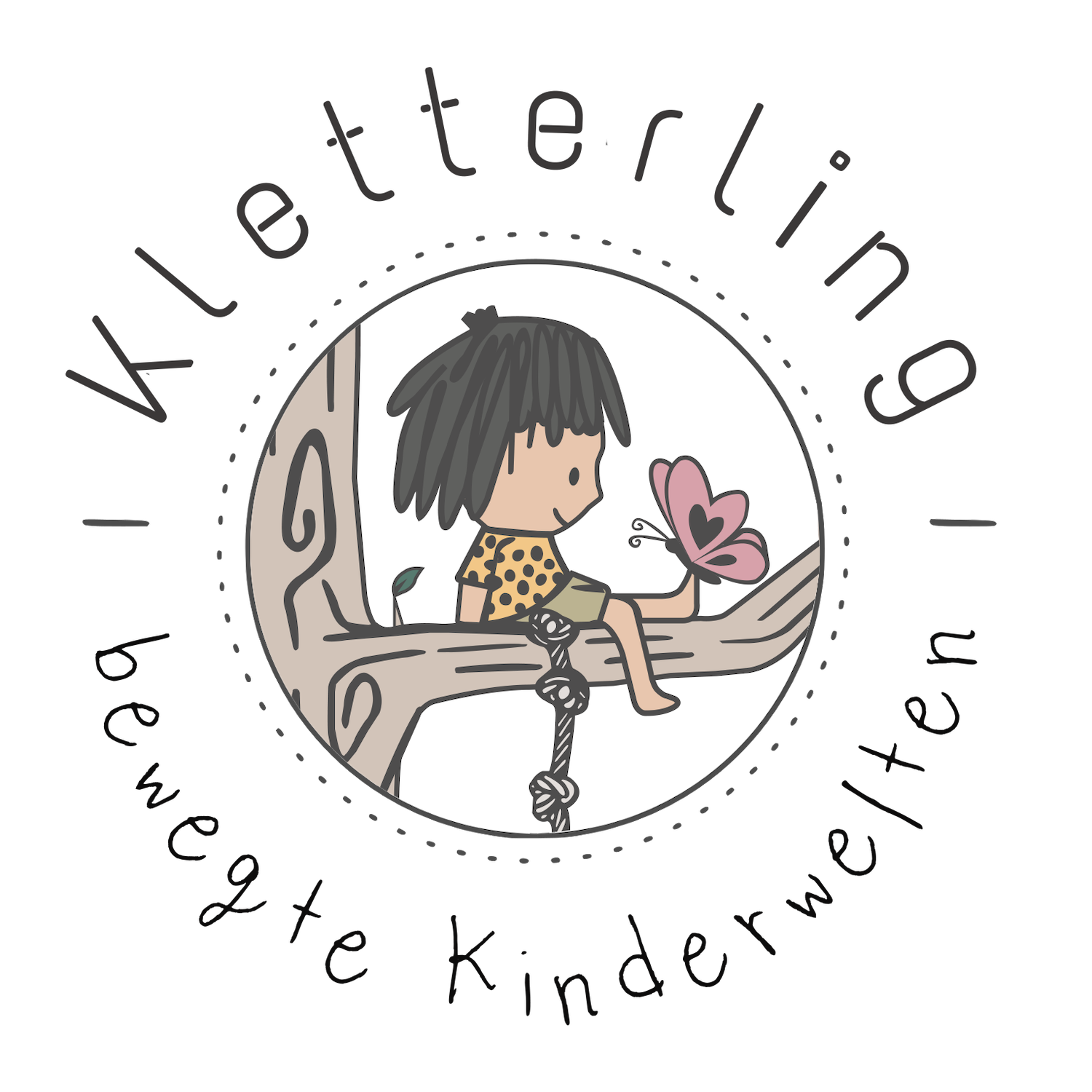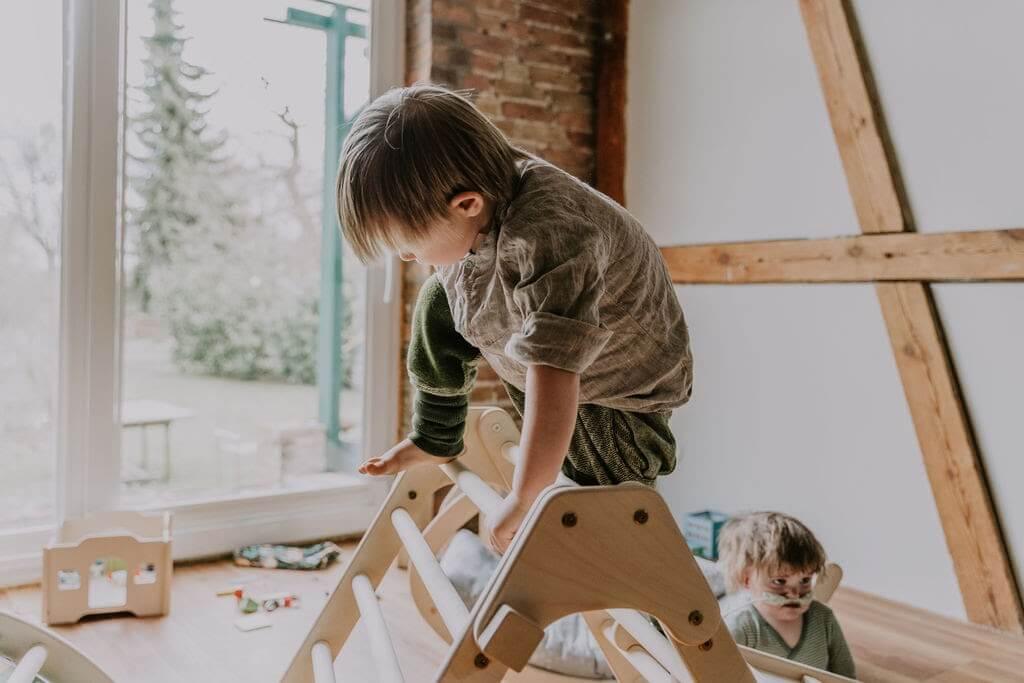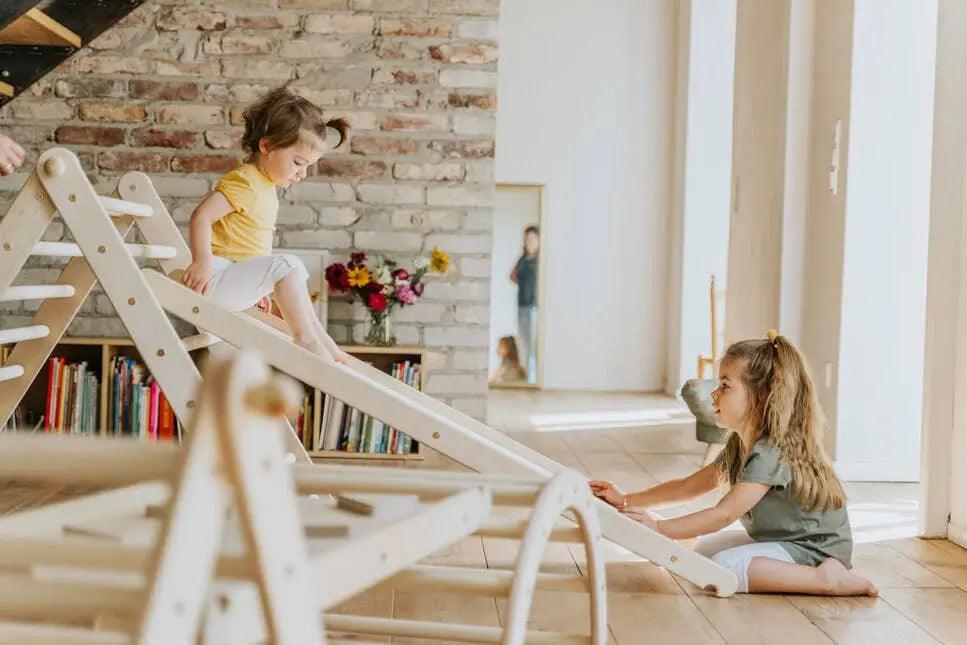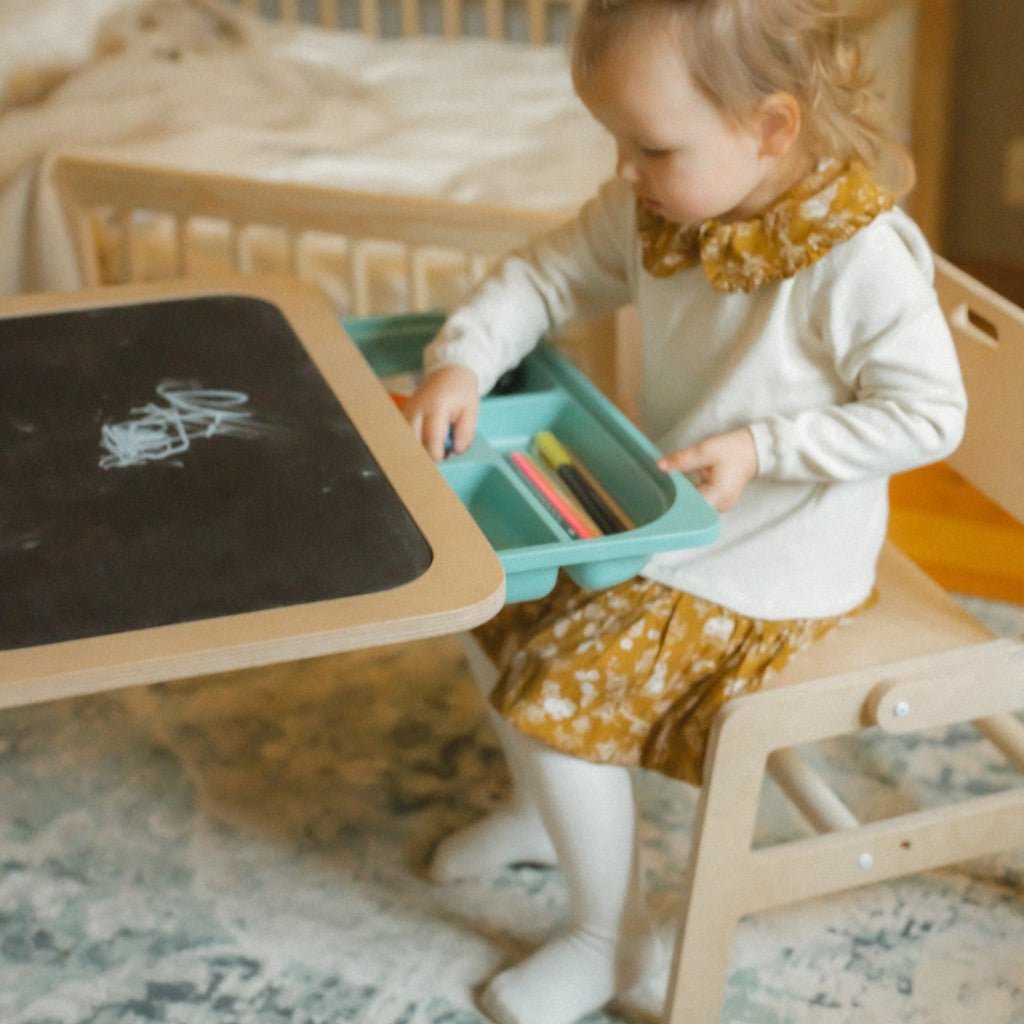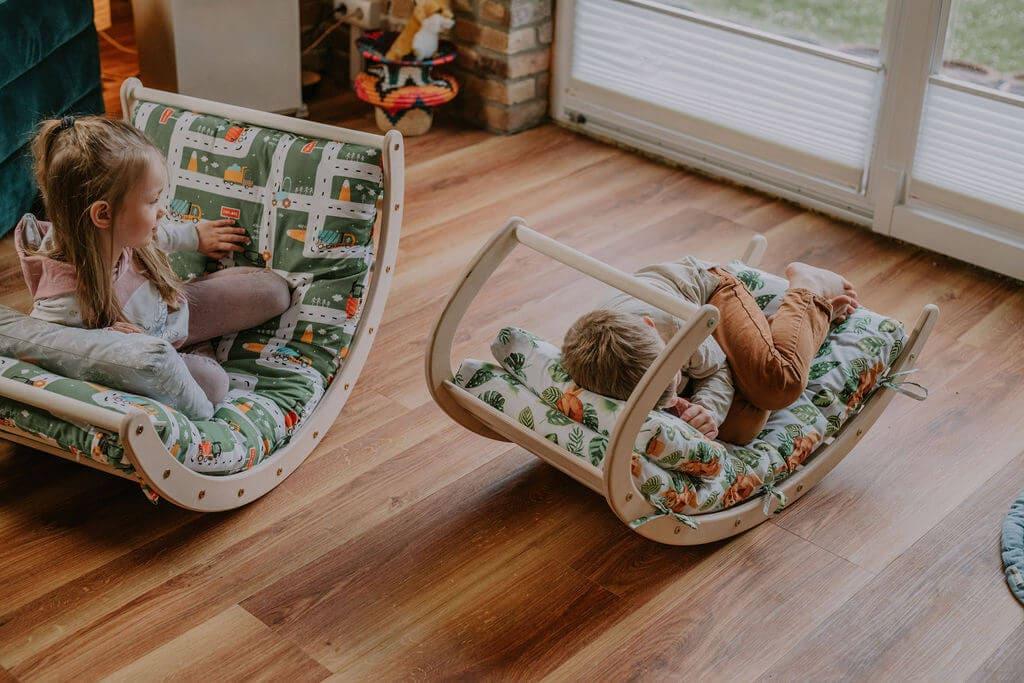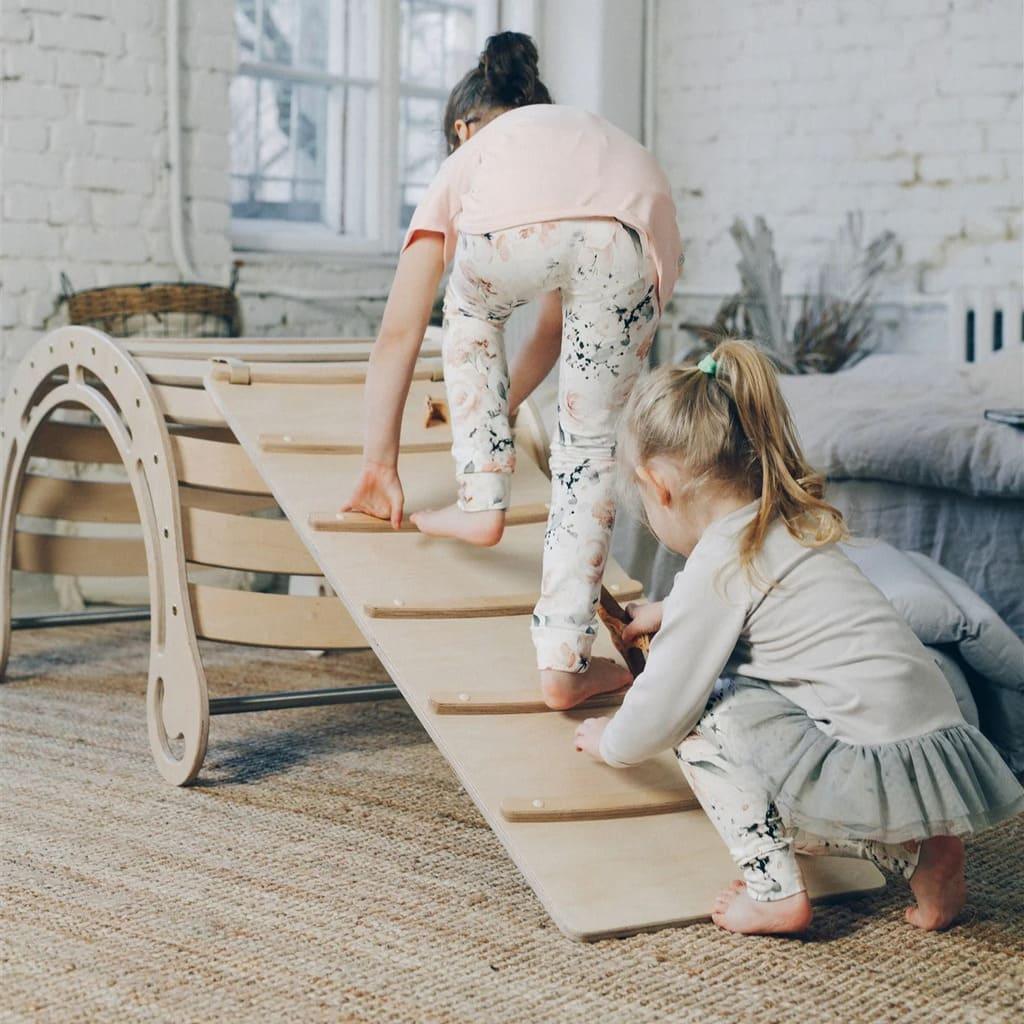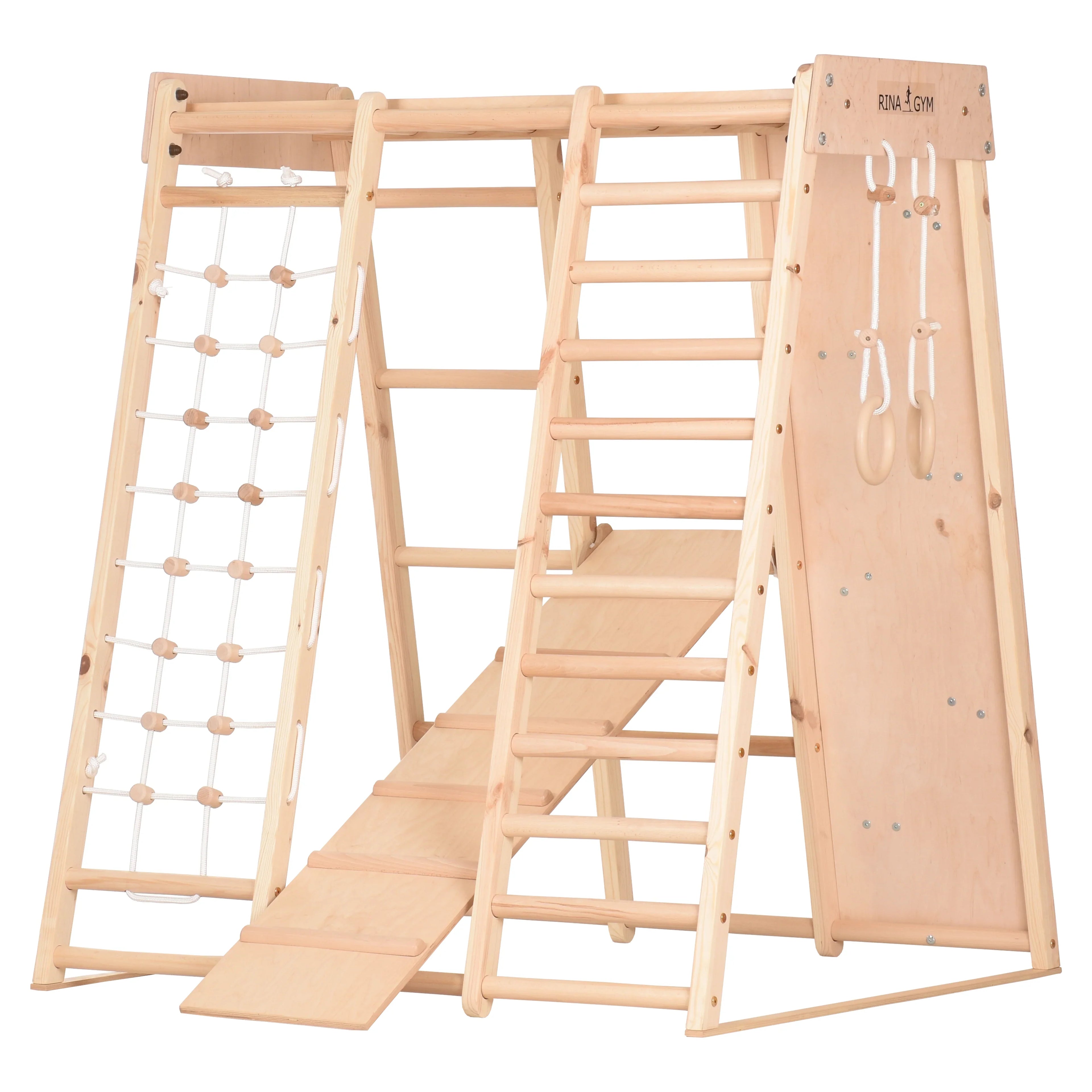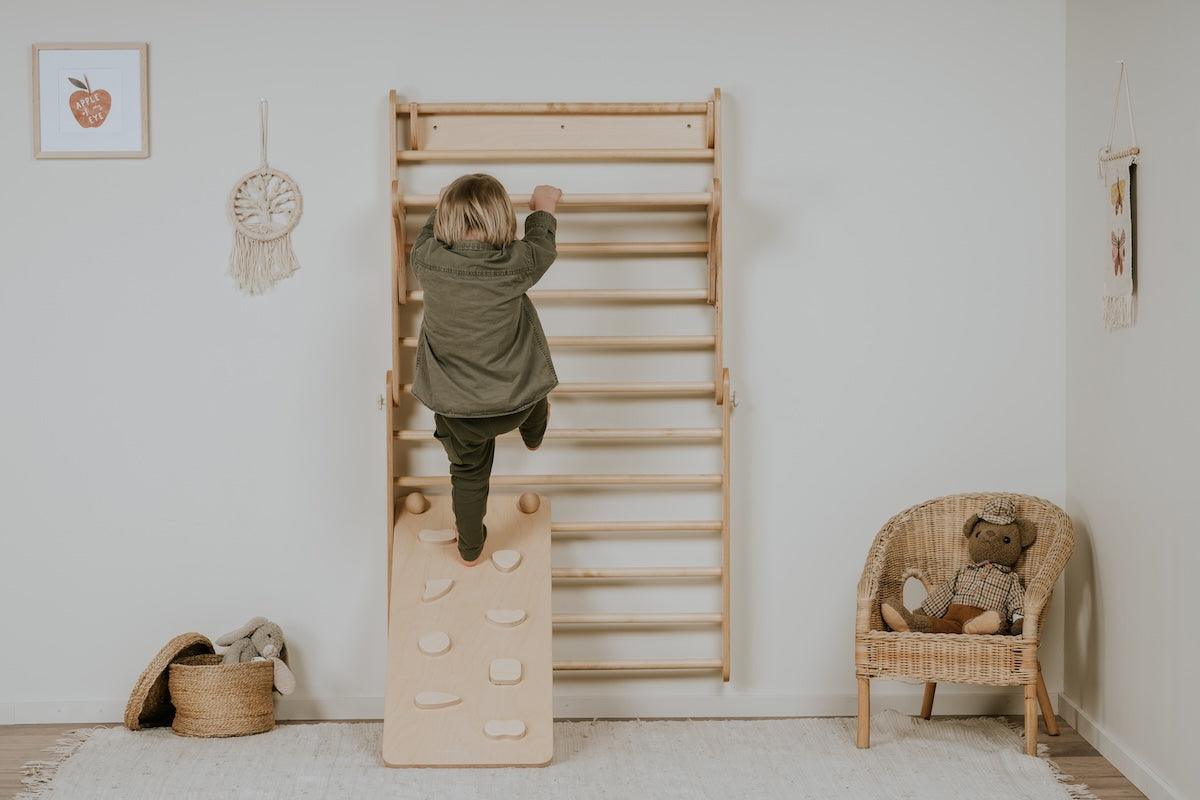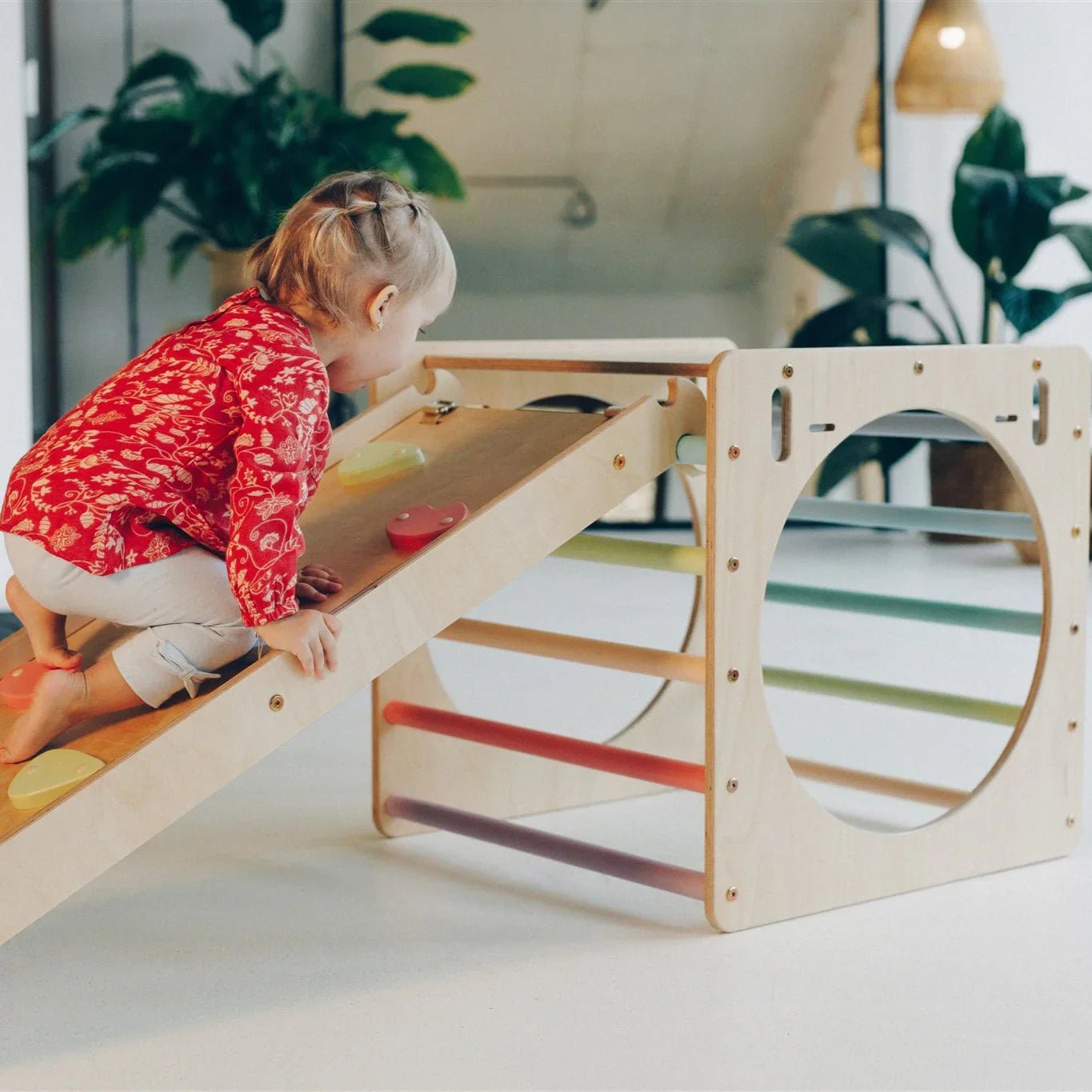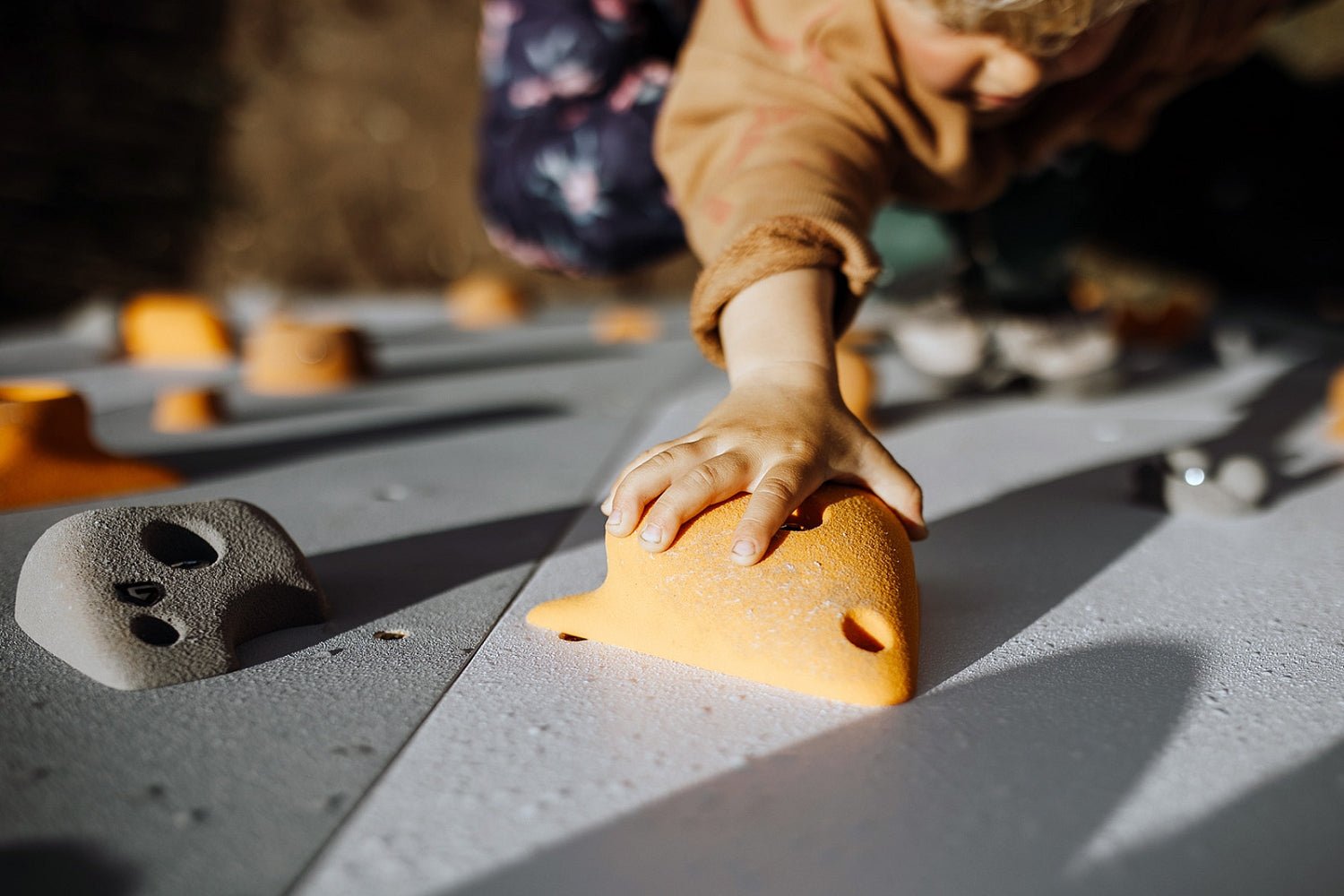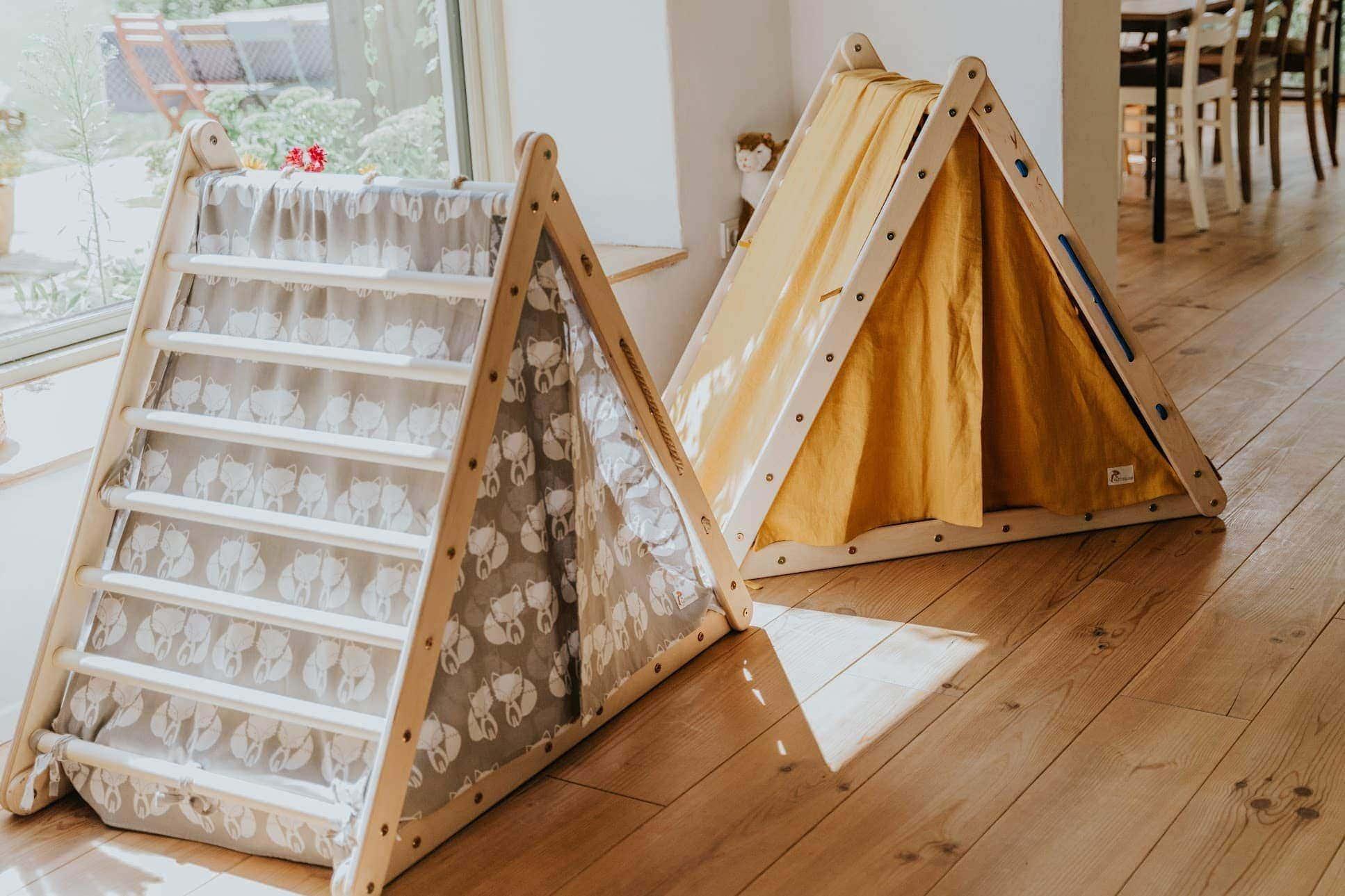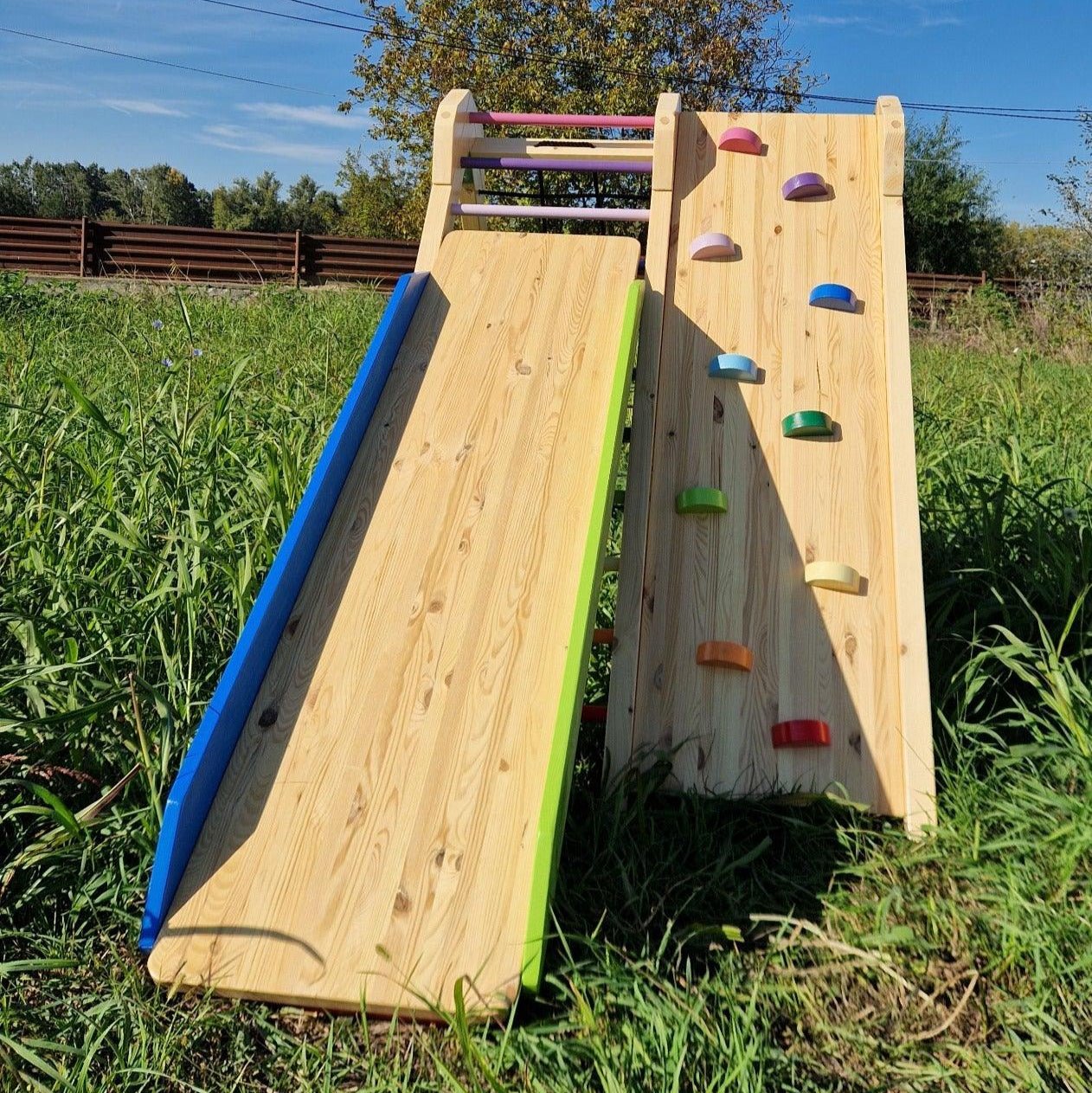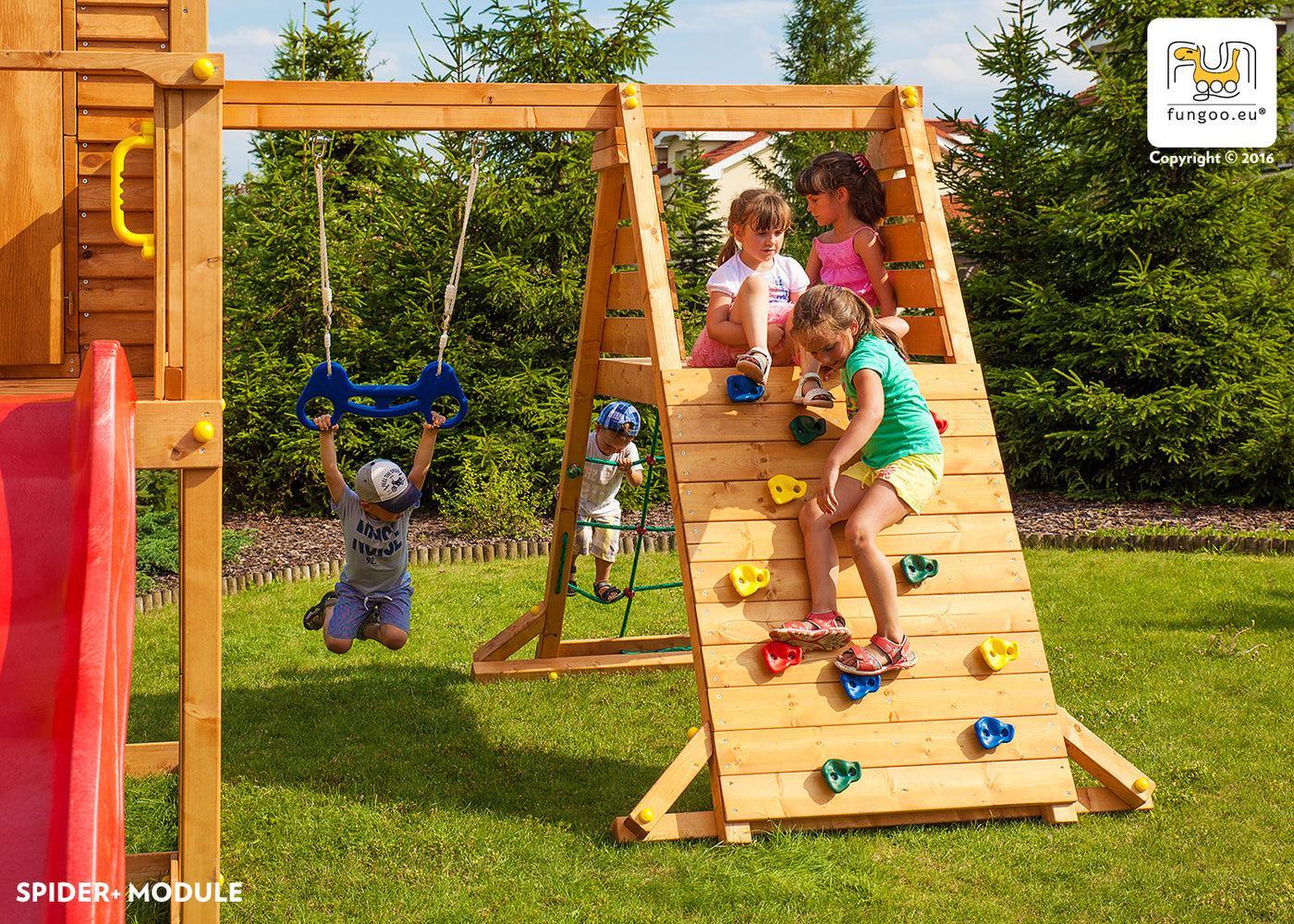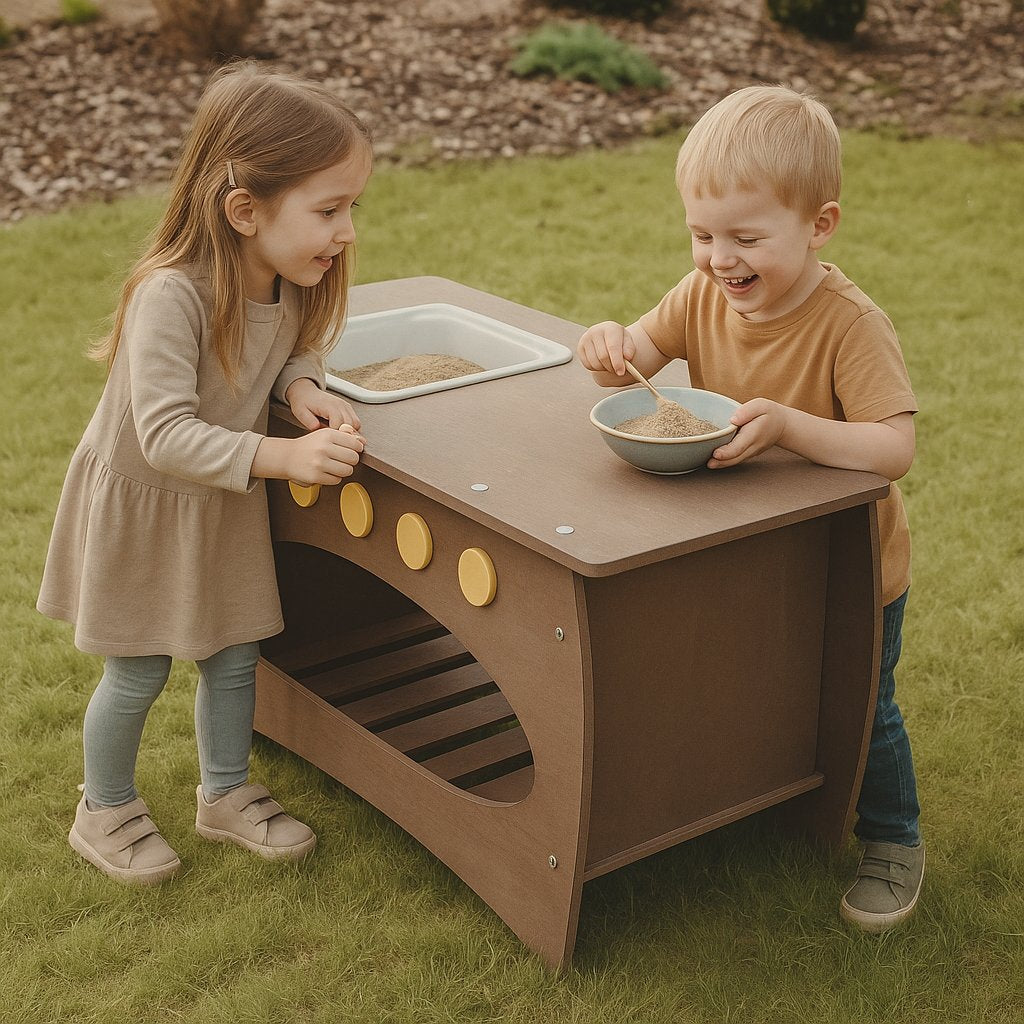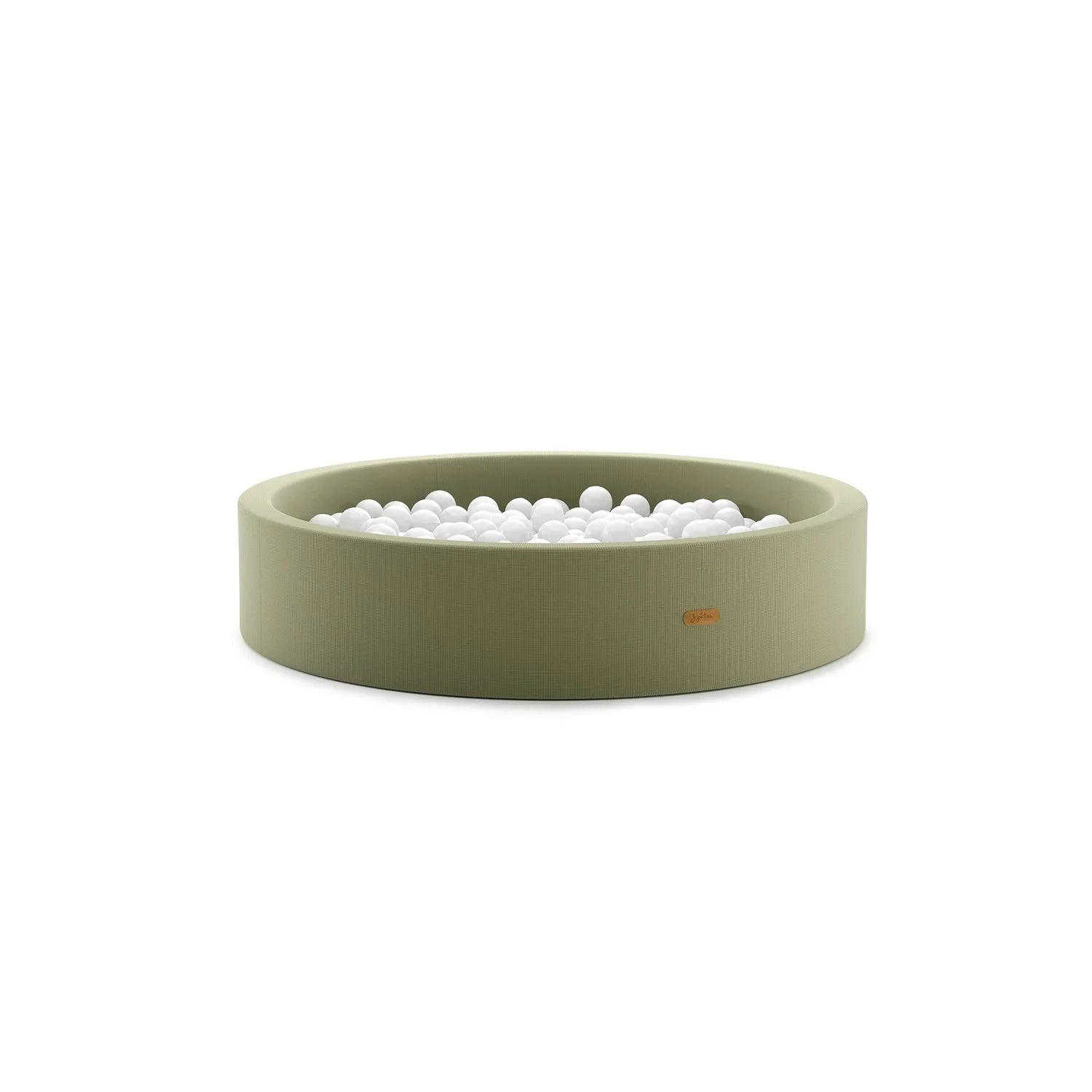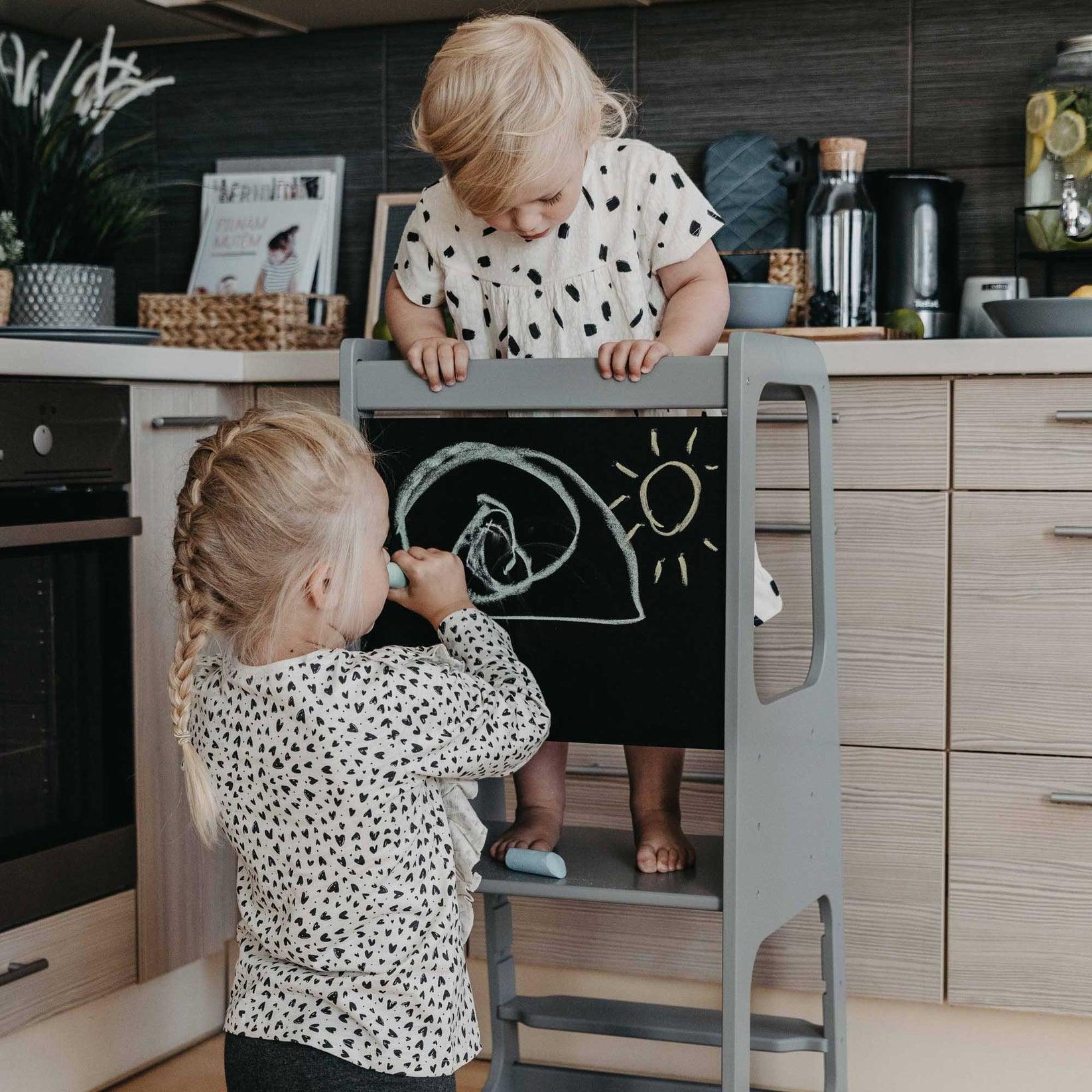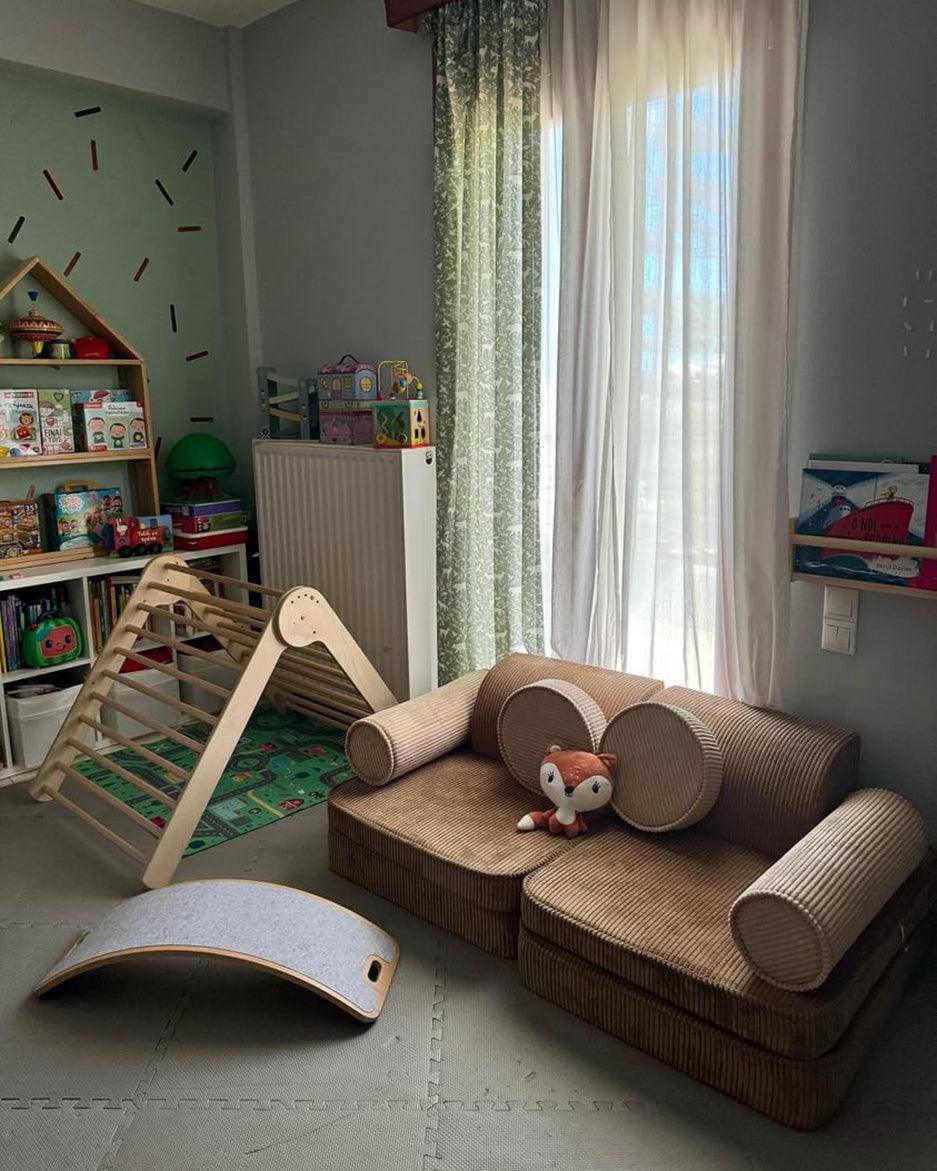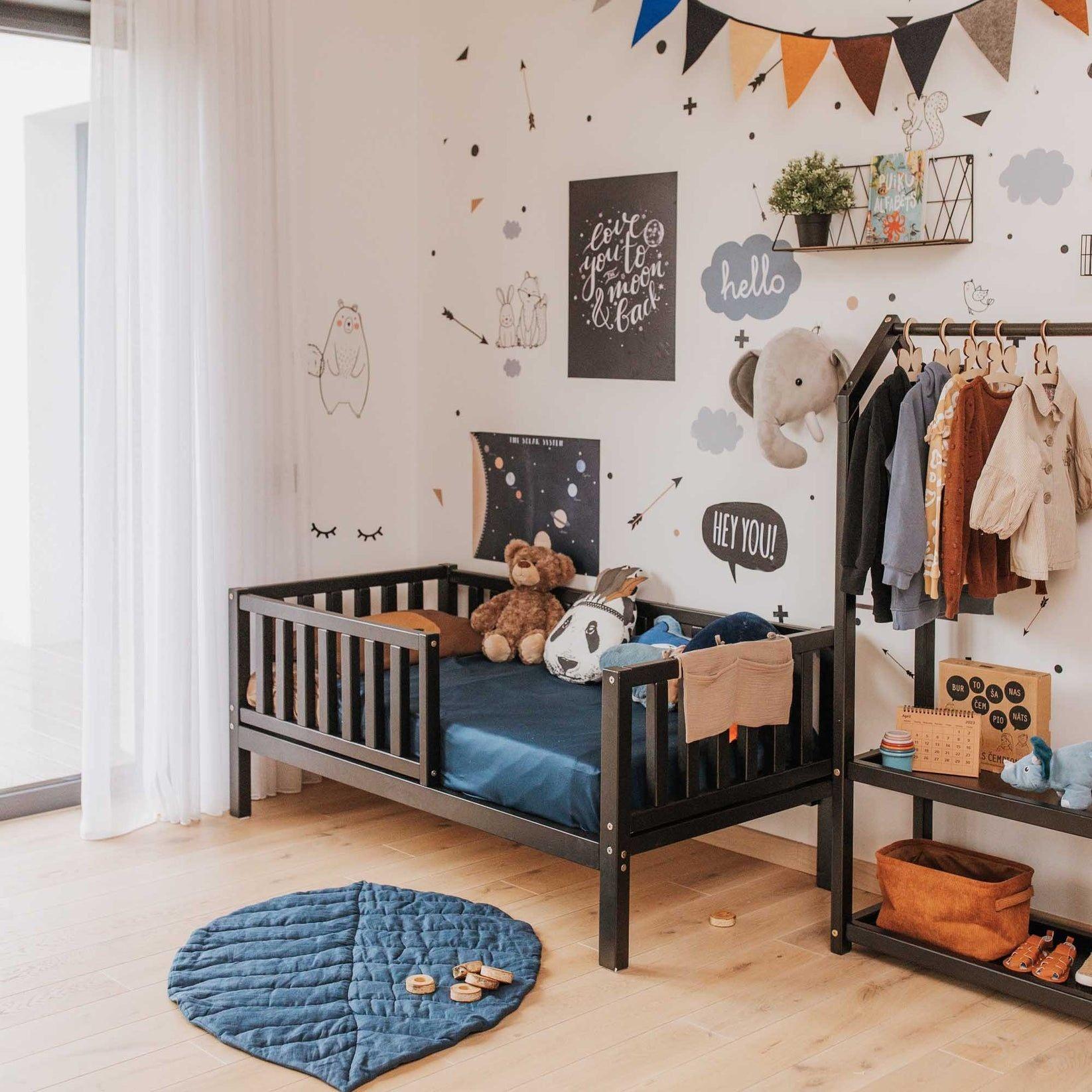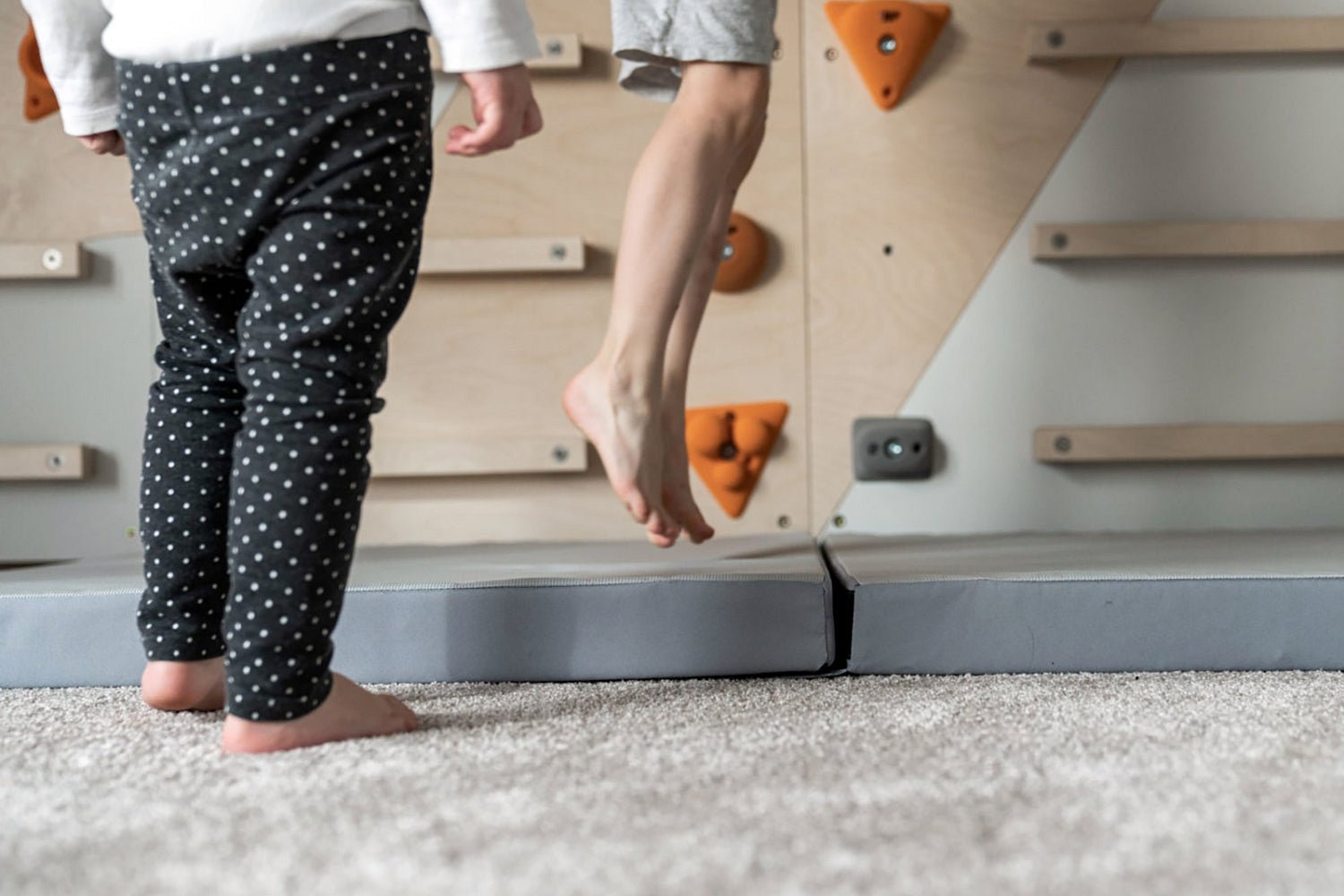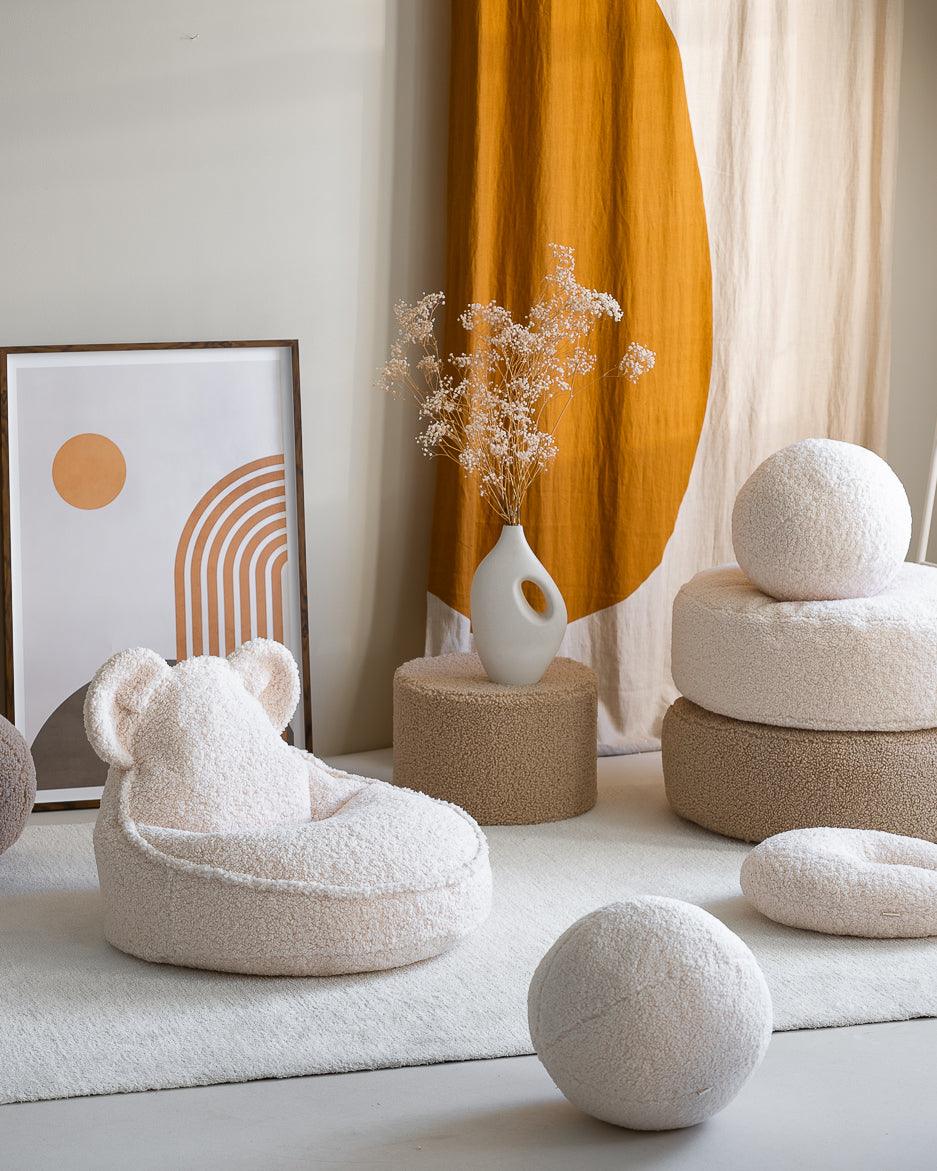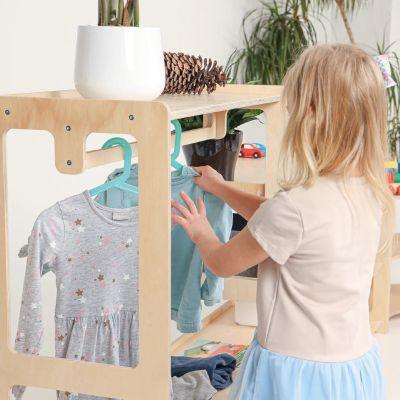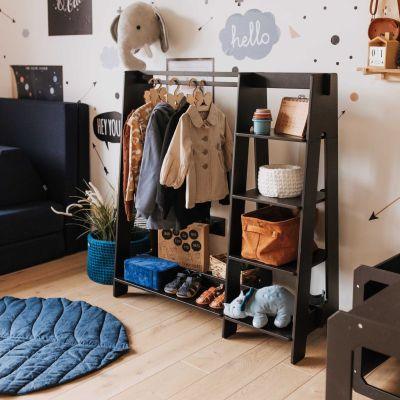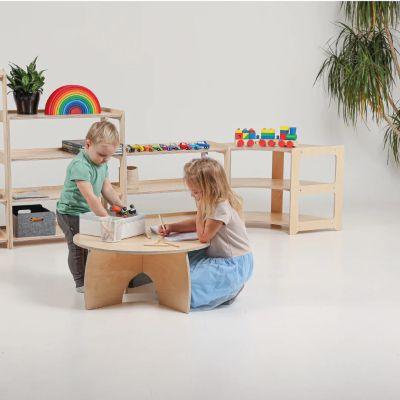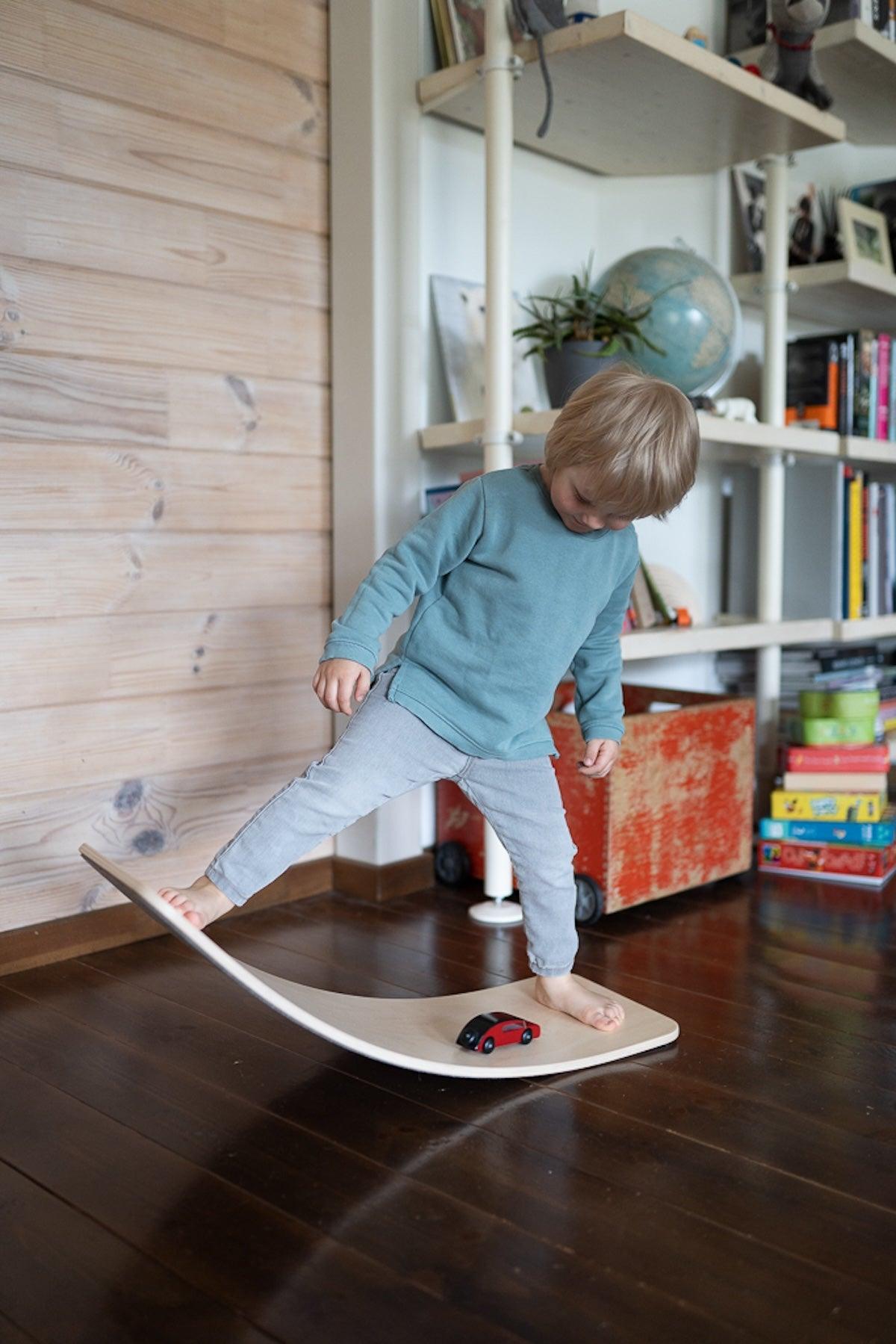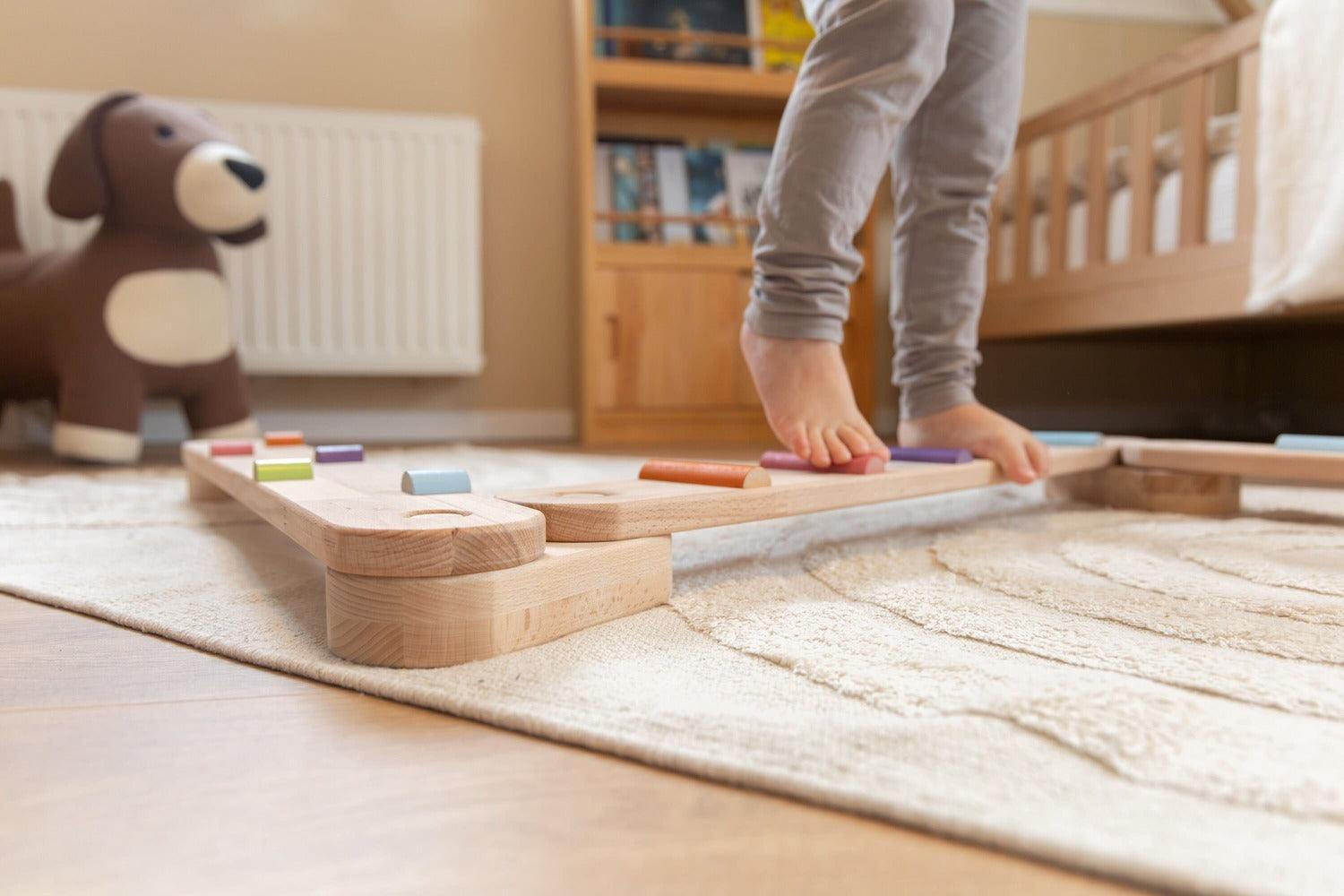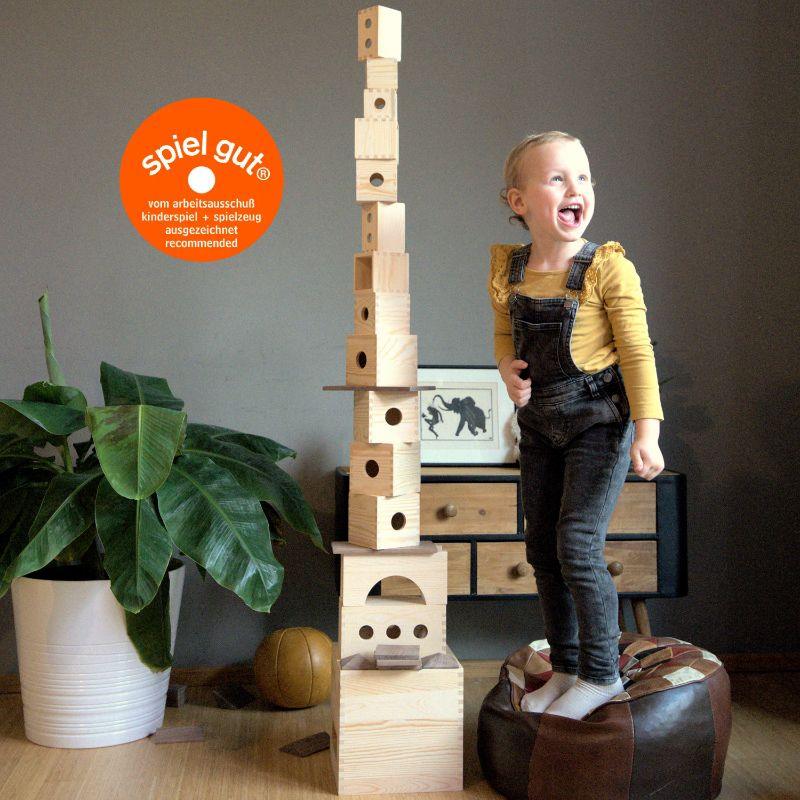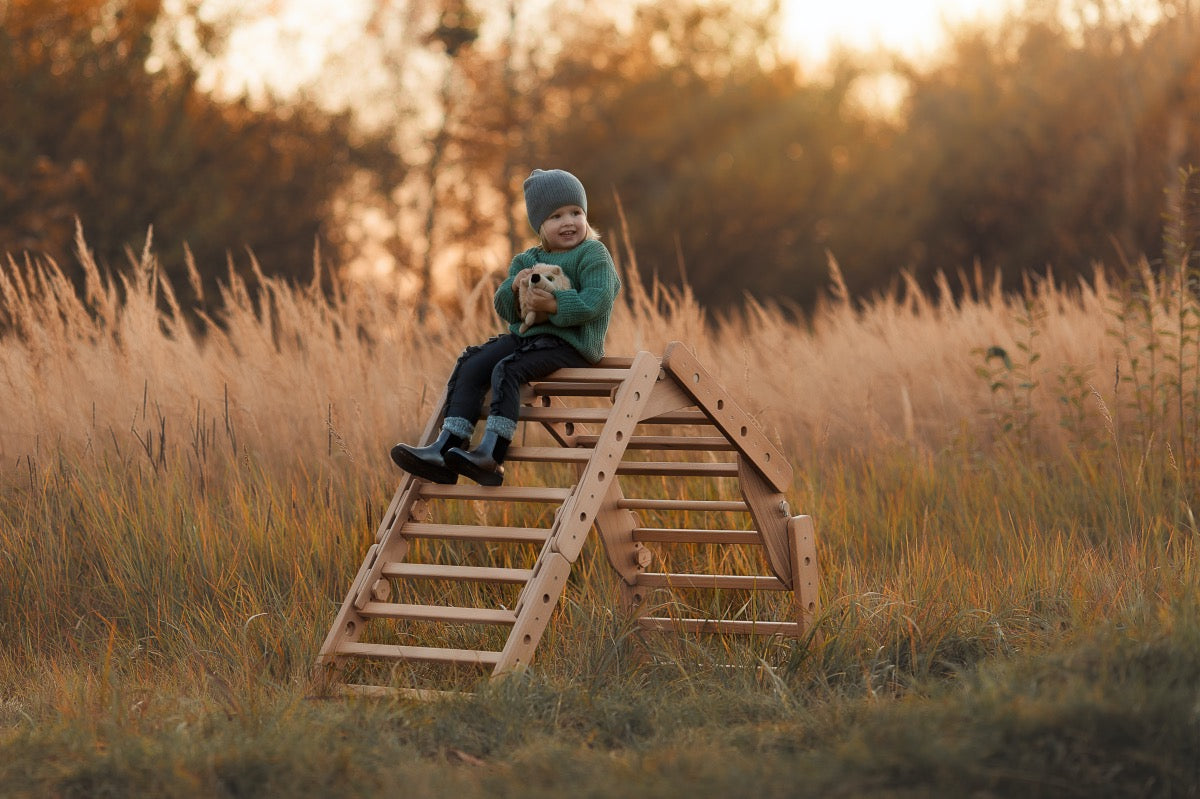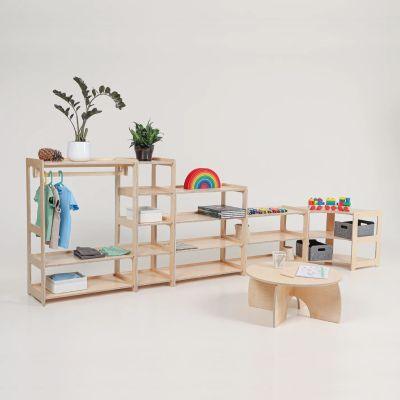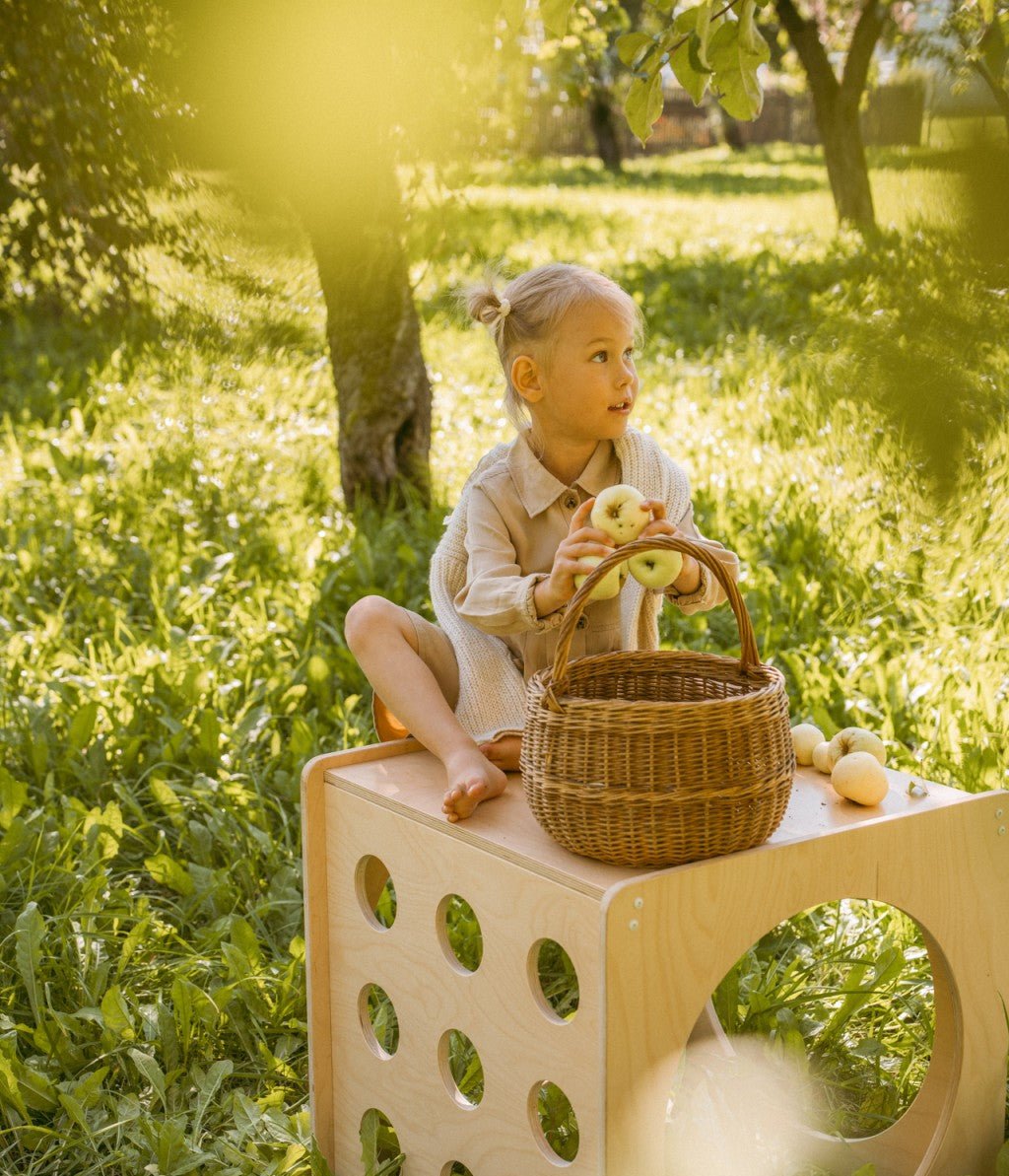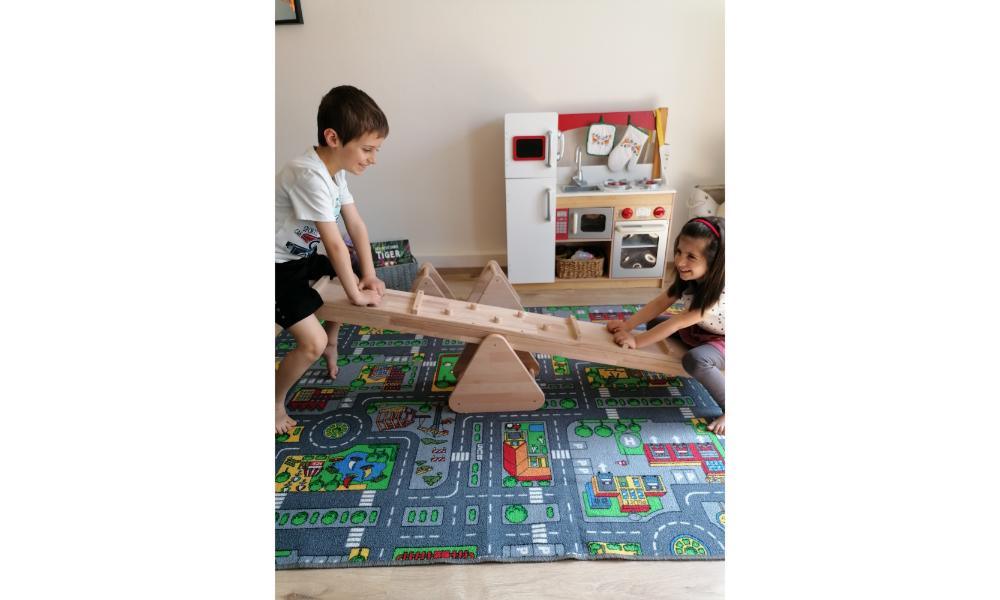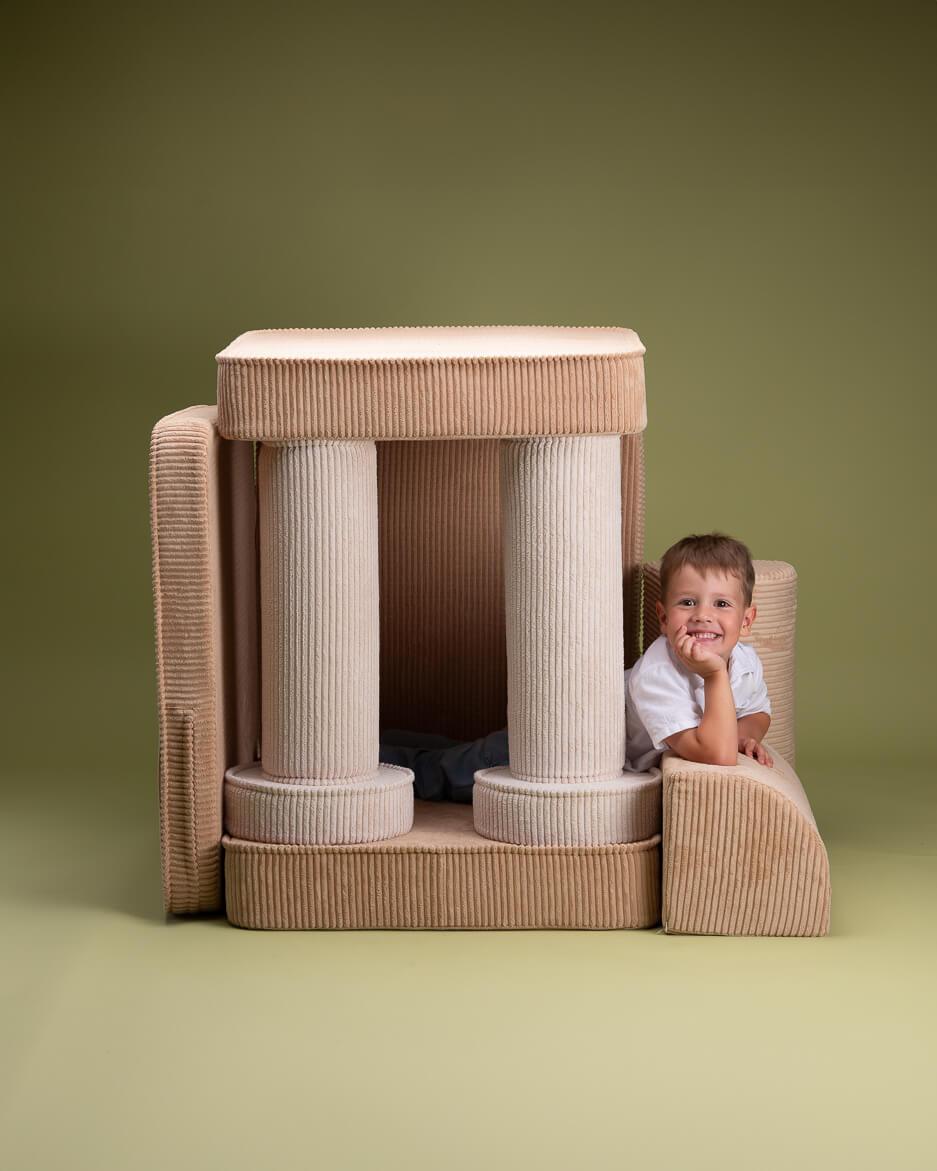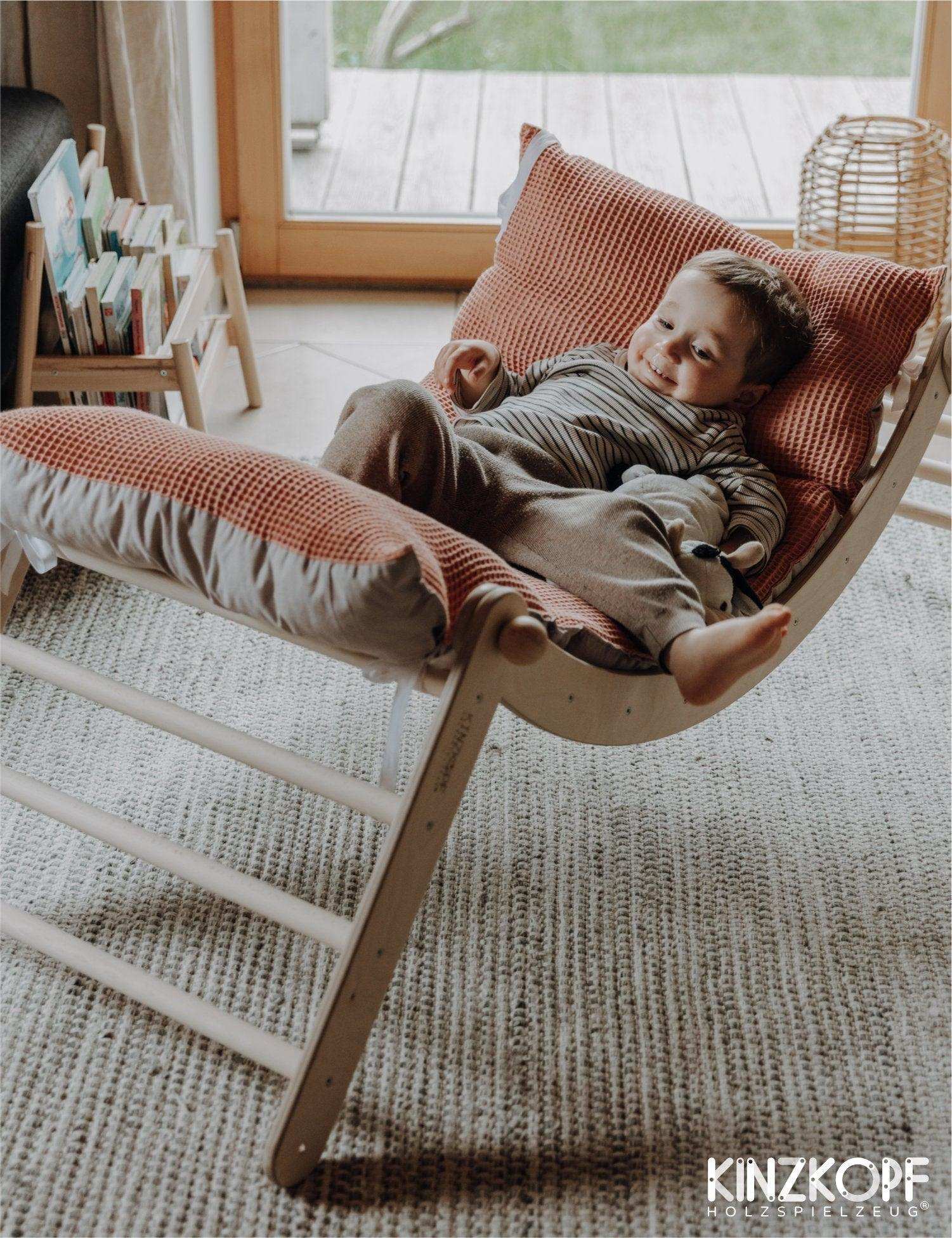Sort by:
4 products
4 products
Discover the Montessori table for toddlers: A place for independence and creativity
Developed with the principles of Montessori education in mind, this table for toddlers encourages your child's independence and creativity. The robust construction and Scandinavian design with optimal size make it the ideal piece of furniture for any nursery .
Give your child their own space with our children's table from KateHaa, whether it's for arts and crafts or snack time. Our children's furniture is designed to fulfil the needs of growing children aged 1-6 years.
A play area for your little one
Create a play area for your little one by combining the children's table with our Montessori shelf. From children's tables to storage solutions, our toddler furniture is designed to encourage exploration and discovery
Made from responsibly sourced, high-quality Baltic birch plywood, the toddler table is handcrafted for toddlers and children aged 1 to 6 years.
Product details
| Feature | |
|---|---|
| Details | |
| Finish | |
| With water-based varnish and colour for smooth, comfortable play and easy cleaning | |
| Materials | |
| Responsibly sourced birch wood and Baltic birch plywood | |
| Weight limit | |
| All our products are tested to fulfil requirements and withstand a load of at least 50 kg | |
| Width | |
| 68 cm | |
| Height | |
| 30 cm | |
| Certification | KateHaa activity toys are certified by the SGS Institute in Germany according to the Toy Safety Directive 2009/48/EC |
The Montessori table for toddlers is more than just a piece of furniture; it's a crucial step in helping your child discover their world with confidence and creativity. Invest today in a thoughtful and inspiring environment for your child's education and exploration.
Our creative spaceTurnyour living room or children's room into a creative area for your child! Painting table, desk, work area for hobbyists, craftsmen, painters. Our children want to imitate us and develop their skills in particular. With the creative space, you can create a space-saving area for your child that promotes creativity, peace and relaxation. Of course, the creative space is also made from our beautiful wood. This means it is child-friendly but stable. The creative space is also made from Baltic birch in our workshop.
As usual, with extra rounded edges and sanded to perfection by hand. Untreated and easy to "clean". Every! Pencil and line can be sanded off with the sandpaper and the creative space shines like new. Had enough thinking, painting and crafting? Then your child can climb on our climbing frames!
Dimensions:
Table: 49cm high, 60cm wide and 51cm deep
Chair: 29cm high, 36cm wide and 30cm deep
What materials is our ìcreative spaceî made from? All parts are made from Baltic birch plywood.
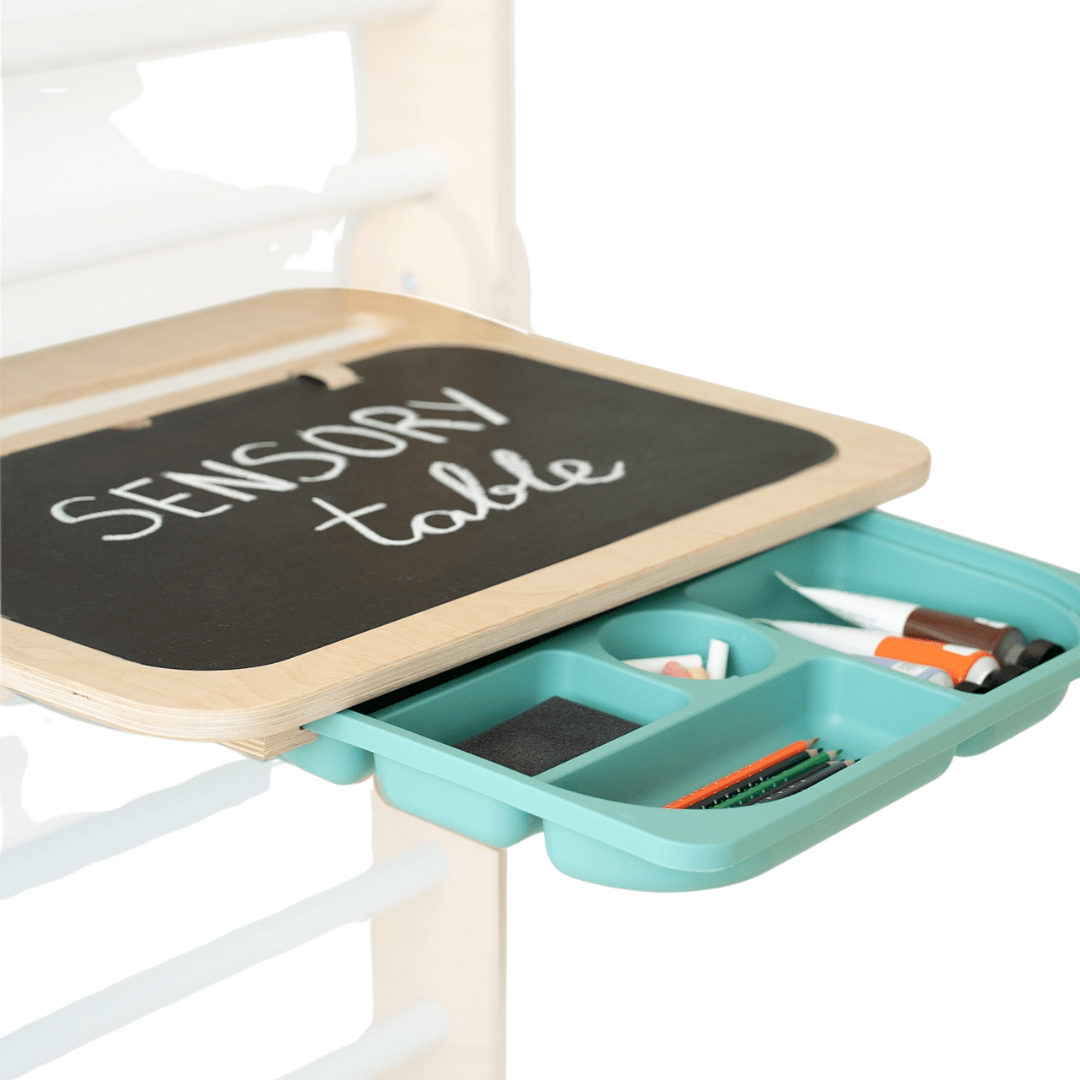
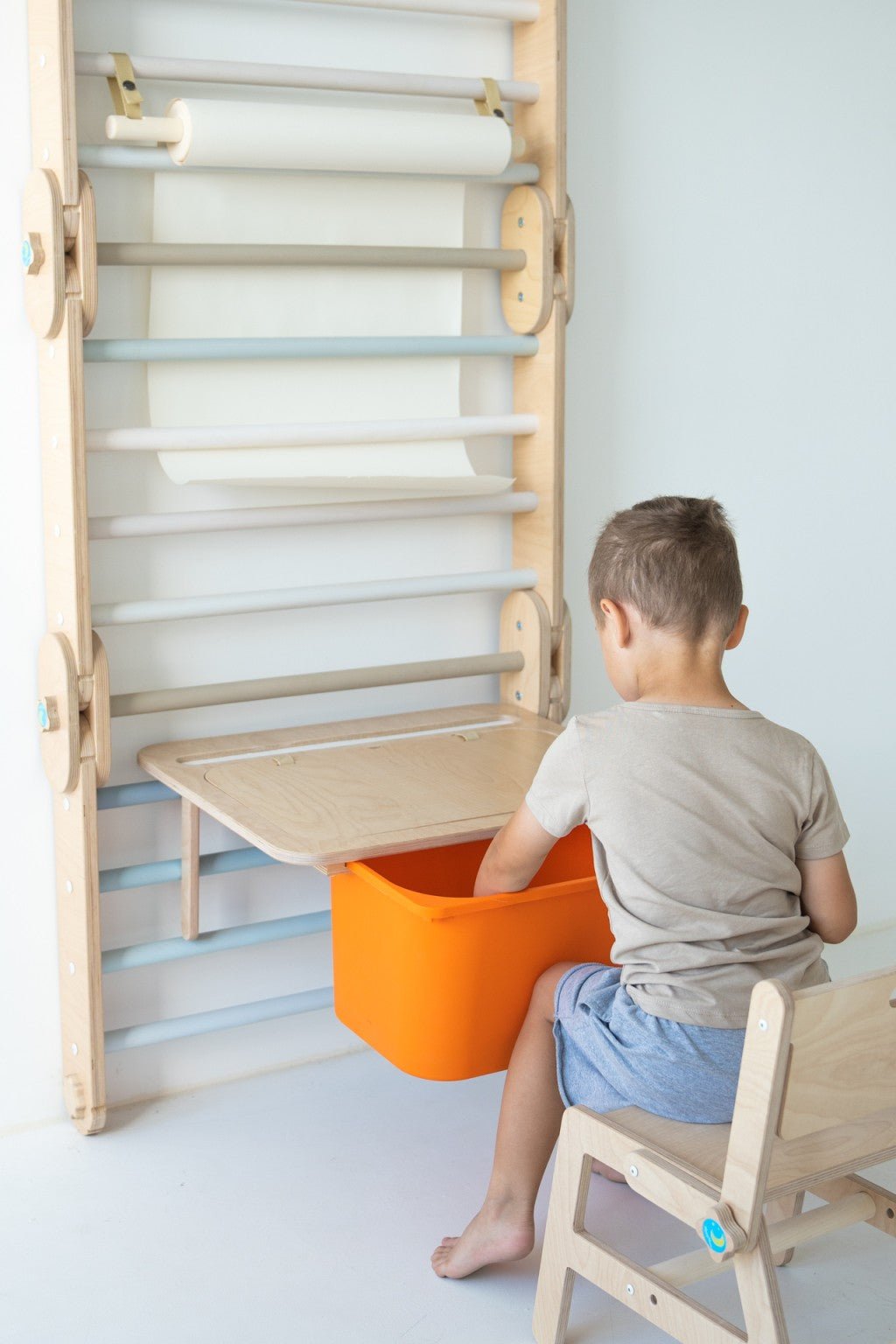
Montessori Tisch MOON für Kletterelemente| Tisch & Box & Tafel | 50 x 30 x 41 cm | wandelbar | Sensorikbox
€94,00
Unit price perMontessori Tisch MOON für Kletterelemente| Tisch & Box & Tafel | 50 x 30 x 41 cm | wandelbar | Sensorikbox
€94,00
Unit price perMultifunktionaler Montessori Tisch – Zeichentafel, Sensorik-Tisch & Aufbewahrung in einem
Mehr Kreativität, mehr Ordnung, mehr Spaß: Unser MOON Montessori Tisch vereint Schreibtisch, Tafel, Aufbewahrung und Lernstation in einem einzigen Möbelstück – perfekt für Kinder ab 1 Jahr. Entdecke endlose Möglichkeiten zum Spielen, Malen und Lernen!
Zur Verwendung an Kletterdreieck, Sprossenwand und allein stehend als kleine Staffelei.
Technische Daten:
• Produktgewicht: 3 kg
• Produktmaße: 58 × 46 cm
• Farbe: Natur
• Altersempfehlung: ab 1 Jahr
• Material: Hochwertiges baltisches Birkensperrholz
Lieferumfang:
• 1 × MOON Tisch (beidseitig nutzbar als Sensorik-Tisch / Kreidetafel)
• 1 × IKEA TROFAST Aufbewahrungsbox
• 1 × Papierhalter (ohne Papier)
• 4 × Sicherheitsgurte zur Befestigung an Sprossen.
Dieser Montessori Tisch ist ein wahres Multitalent:
• Als Schreibtisch: Perfekt zum Malen, Basteln oder für kleine Mahlzeiten.
• Als Tafel: Einfach umdrehen und los zeichnen – der Tisch wird zur kreativen Leinwand.
• Als Sensorik-Tisch: Mit wechselbaren Boxen (z. B. für Sand, Wasserperlen oder Naturmaterialien) wird aus dem Tisch eine spannende Erlebnisstation.
• Als Aufbewahrung: Bausteine, Spielzeug und Malsachen lassen sich ordentlich verstauen.
In Kombination mit Kletterdreieck oder Sprossenwand sowie einzeln nutzbar – immer ein Gewinn für bewegte & kreative Kinderzimmer!
Montagehinweis:
Das Produkt wird unmontiert geliefert, um Transportschäden und hohe Versandkosten zu vermeiden.
Die Montage sollte ausschließlich durch Erwachsene erfolgen – Kinder dürfen aber gerne helfen und den Aufbau zu einem gemeinsamen Erlebnis machen.
Pflege & Haltbarkeit:
• Nur für den Innenbereich geeignet
• Holz vor Feuchtigkeit und direkter Sonneneinstrahlung schützen
• Reinigung mit trockenem oder leicht feuchtem Tuch (keine aggressiven Reinigungsmittel verwenden)
Sicherheit:
Für ein rundum sicheres Spielvergnügen empfehlen wir, dass Kinder jederzeit von einem Erwachsenen begleitet werden. Unsere Produkte sind stabil und sorgfältig geprüft – dennoch bitten wir um Verständnis, dass wir keine Verantwortung für etwaige Unfälle übernehmen können.
Hochwertige Handwerkskunst – gefertigt in der EU
Unser MOON Montessori Tisch wird in liebevoller Handarbeit in Lettland (EU) gefertigt. Hochwertige Materialien, inspiriert von den Prinzipien von Montessori, Pikler und Waldorf, machen ihn zum langlebigen Begleiter in der Entwicklung deines Kindes.
Suchst du nach einem Geschenk, das garantiert Freude bereitet und genau den Geschmack des Beschenkten trifft? Mit einem Kletterling Geschenkgutschein liegst du immer richtig! Unser Gutschein ist die ideale Lösung für alle, die Kindern eine Freude machen möchten, aber nicht sicher sind, welches unserer hochwertigen Spielgeräte am besten passt.
Warum ein Kletterling Gutschein das perfekte Geschenk ist
Ein Geschenkgutschein von Kletterling bietet weit mehr als nur einen Warenwert – er schenkt Wahlfreiheit, Vorfreude und die Möglichkeit, genau das Spielgerät auszusuchen, das perfekt zu den individuellen Bedürfnissen und Wünschen des Kindes passt.
Die Vorteile unseres Gutscheins auf einen Blick:
• Flexible Auswahl – Der Beschenkte kann selbst entscheiden, ob er einen Kletterbogen, eine Matschküche, ein Kindersofa oder eines unserer vielen anderen Qualitätsprodukte wählt
• Langfristige Gültigkeit – Unser Gutschein ist 3 Jahre lang einlösbar, sodass genügend Zeit für die perfekte Auswahl bleibt
• Persönliches Geschenk – Du kannst den Gutscheinbetrag frei wählen und so an dein Budget anpassen
• Einfache Einlösung – Problemlose Verwendung in unserem Online-Shop mit nur wenigen Klicks
• Sofort verfügbar – Nach dem Kauf erhältst du den Gutschein direkt per E-Mail zum Ausdrucken oder Weiterleiten
So funktioniert der Kletterling Gutschein
Unser Gutscheinsystem ist bewusst einfach und unkompliziert gestaltet:
1. Wunschbetrag auswählen – Entscheide dich für einen Betrag deiner Wahl
2. Bestellen und bezahlen – Wie bei einem normalen Produkt in unserem Shop
3. Gutschein erhalten – Der Gutscheincode wird dir per E-Mail zugesendet
4. Verschenken – Drucke den Gutschein aus oder leite die E-Mail weiter
5. Einlösen – Der Beschenkte kann den Gutscheincode bei seiner Bestellung im Warenkorb einlösen
Der perfekte Anlass für einen Kletterling Gutschein
Ob Geburtstag, Weihnachten, Ostern oder einfach als Überraschung zwischendurch – ein Kletterling Gutschein passt zu jedem Anlass:
• Zum Geburtstag – Schenke die Freiheit, sich einen langgehegten Wunsch zu erfüllen
• Zu Weihnachten – Der ideale Gutschein für unter den Weihnachtsbaum
• Zur Geburt oder Taufe – Ein wertvolles Geschenk, das für die Zukunft des Kindes investiert wird
• Für Großeltern, Paten und Freunde – Die perfekte Lösung, wenn man nicht täglich mit dem Kind zusammen ist und seine aktuellen Wünsche kennt
Qualität und Werte schenken
Mit einem Kletterling Gutschein verschenkst du nicht nur einen Warenwert, sondern auch unsere Philosophie: hochwertige, entwicklungsfördernde Spielgeräte, die mit Liebe zum Detail gefertigt werden und Kindern helfen, ihre motorischen und kognitiven Fähigkeiten spielerisch zu entfalten.
Unser Sortiment umfasst ausschließlich Produkte, die wir sorgfältig ausgewählt haben und hinter denen wir als Familienunternehmen mit unserem Namen stehen. Von nachhaltigen Materialien bis hin zu durchdachten Designs – wer bei Kletterling einkauft, entscheidet sich für Qualität und Nachhaltigkeit.
Tipp: Wenn du unsicher bist, welchen Betrag du wählen sollst, orientiere dich an unseren Produktkategorien. Für Kletterdreiecke oder kleinere Spielgeräte eignen sich Beträge ab 100 €, für größere Klettergerüste oder Komplettsets kannst du auch höhere Summen verschenken.
Fazit: Ein Kletterling Geschenkgutschein ist die perfekte Lösung für alle, die Kindern eine Freude machen und gleichzeitig die Entscheidungsfreiheit schenken möchten. Mit seiner langen Gültigkeit, der einfachen Einlösung und der Möglichkeit, aus unserem gesamten hochwertigen Sortiment zu wählen, wird dieser Gutschein garantiert für leuchtende Kinderaugen sorgen.
Schenke Spielfreude, Entwicklungsförderung und Qualität – mit einem Kletterling Geschenkgutschein!
Entdecke Kletterling
Kletterdreiecke sind nur der Start in eine bewegte Kindheit. Du findest bei uns Kindermöbel, Sprossenwände, Sitzsäcke, Sofas, Schaukeln und noch so viel mehr.

Familienunternehmen mit Herz
Persönlich beraten
Wir beraten dich persönlich in Entwicklungs- und Einrichtungsfragen bequem zu Hause. Schon ein paar leicht aufzustellende und sichere Bewegungselemente, wie ein Kletterdreieck, verändern die Auslastung deines Kindes und damit seine Stimmung zum Positiven. Doch das ist nur der Anfang, mit uns kannst du euer Zuhause in einen Ort verwandeln, in dem dein Kind jederzeit seinem Bedürfnis nach Bewegung und Entspannung nachgehen kann und dann passiert etwas Magisches, wie von Zauberhand zieht Gelassenheit bei euch ein, in deinem Kind und in dir!
Wir sind Isabell, Erik und Kosmo. Gegründet haben wir Kletterling aus der Not heraus: Qualität wird so oft mit Marketing-Blabla vorgetäuscht. Wir wollen so viel Transparenz, wie möglich ist. Aus welchem Material ist mein Kinderspielzeug, woher kommt es und wurden Chemikalien verwendet? Wie steht es um die Sicherheit und wird es wirklich in Europa produziert? In China produziert, in Deutschland zusammengebaut und dann Made in Germany, gibt es bei uns nicht. Alle Produkte stammen von kleinen Herstellern aus Europa, denen wir hier ihre verdiente Plattform bieten. Dabei hapert es meist am Kundendienst in einer fremden Sprache, den wir komplett übernehmen, weil wir es lieben, mit euch im Austausch zu stehen, was heutzutage leider immer seltener wird.
Außerdem kaufst du bei uns mit sicheren Zahlmethoden in Deutschland bei einem deutschen Unternehmen ein, was dir ein gutes Gefühl und Sicherheit bringt, damit du dich voll auf das konzentrieren kannst, weshalb du hier bist: Das richtige Bewegungsspielzeug für dein Kind zu finden.
Danke für dein Vertrauen!
- Isabell & Erik
Kategoriebeschreibung
Children's desk: Optimize your child's learning enjoyment and health
A children's desk is more than just a piece of furniture—it's the key to a world of creativity and learning opportunities for your child. During the early years, children develop an insatiable curiosity and a desire to explore the world around them. A well-chosen desk can foster this spirit of discovery by providing a dedicated space specifically tailored to children's needs.
While the selection is vast and the decision may be difficult, it's important to find a desk that's not only ergonomically designed for your child, but also inspires creativity and encourages a love of learning. This article will explain what to look for when purchasing a children's desk to create an environment where your child can reach their full potential. Let's work together to find the perfect companion for your child's learning adventures.
What should a children's desk look like?
 A well-designed children's desk plays a crucial role in your child's development and learning. Having highlighted the importance of such furniture for creativity and learning, here are some specific aspects you should pay attention to.
A well-designed children's desk plays a crucial role in your child's development and learning. Having highlighted the importance of such furniture for creativity and learning, here are some specific aspects you should pay attention to.
Ergonomics and adaptability
A height-adjustable desk is essential for growing with your child. This ensures the desk can be used for years – from elementary school through adolescence. Some models also offer a sloped tabletop, making reading, writing, and drawing more ergonomic.
Materials and safety
Wooden desks are not only durable but also safe for your child. Make sure all materials used are free of harmful substances. Corners and edges should be rounded to avoid injuries.
Storage space and organization
A children's desk with ample storage space, such as drawers or compartments, helps keep things organized. At the same time, it promotes your child's organizational skills. Some models also offer additional accessories such as hooks for bags or integrated lighting.
Design and motivation
The color and design of the desk can also influence the desire to learn. Bright colors or designs that match your child's interests (be it a pink desk for girls or a cool blue for boys) can be motivating.
A height-adjustable desk for children is all about creating a safe and comfortable space that your child will enjoy spending time in. With the right features, this special spot in the nursery can quickly become a center for creativity and learning.
Why are children's desks slanted?
 Choosing a slanted children's desk isn't a coincidence, but a decision based on sound knowledge of ergonomics and child development. The inclination of the tabletop plays a crucial role in the child's posture during learning and play.
Choosing a slanted children's desk isn't a coincidence, but a decision based on sound knowledge of ergonomics and child development. The inclination of the tabletop plays a crucial role in the child's posture during learning and play.
Promote healthy posture
A tilting desk supports a natural sitting posture. The tilt adjustment allows your school-age child to focus directly on their books or work materials without having to bend or stretch their neck unnecessarily. This reduces the risk of back and neck pain—an important aspect of your child's health.
Improve your handwriting
The correct desk tilt also makes writing easier. It helps keep the wrist in a natural position, thus promoting neat and fluent handwriting. This is an invaluable advantage, especially in elementary school, where learning to write is a priority.
Adaptation to different activities
Whether painting, reading, or crafting, a tilting children's desk flexibly adapts to the child's diverse needs. Depending on the activity, the ideal inclination can be set, which not only increases efficiency but also helps your school-age child stay focused for longer.
Overall, a tilted desk offers many ergonomic advantages for children. It provides optimal support throughout their school years and plays a key role in maintaining their love of learning and fostering their creative abilities. A height-adjustable desk with a tilting tabletop is therefore a worthwhile investment in your child's well-being and educational path.
What shouldn’t be missing from a child’s desk?
A well-equipped children's desk plays a crucial role in your child's learning and creativity development. Having emphasized the importance of an ergonomic, height-adjustable desk with a tilting tabletop, you should now know which elements are essential for an optimal learning space.
 Ergonomic chairs
Ergonomic chairs
An ergonomic chair is a must-have for a height-adjustable children's desk. It supports healthy posture and promotes concentration during homework or creative projects.
Sufficient light
Good lighting prevents eye fatigue. A desk lamp with an adjustable arm can be positioned exactly where the light is needed.
Organizational aids
Storage space in the form of drawers or compartments under the children's desk helps keep things organized. Organizer boxes or pencil holders on the tabletop ensure your schoolchild has the necessary supplies quickly at hand.
Personal touch
Let your child decorate their workspace with personal items like photos or favorite paintings. This will enhance the feel-good atmosphere and thus also increase motivation.
Learning materials
Basic materials such as books, notebooks, and various writing utensils are essential. For younger children, art supplies can also encourage creativity.
By considering these aspects, you'll create a motivating and functional workspace in your child's room that optimally supports learning and creative development. A carefully selected children's desk, complemented by practical accessories and personalized elements, will inspire learning and reliably accompany your child on their educational journey.
How much does a good children's desk cost?
 Investing in a high-quality children's desk is a decision that can promote your child's learning and creativity in the long run. However, the cost of a good desk varies greatly depending on its function, material, and brand.
Investing in a high-quality children's desk is a decision that can promote your child's learning and creativity in the long run. However, the cost of a good desk varies greatly depending on its function, material, and brand.
Simple models
A simple children's desk without adjustable features or additional storage space can often be purchased for as little as €50. Such models are ideal for parents on a budget, but may not offer the ergonomics or flexibility needed by a growing schoolchild.
Height-adjustable desks
For a height-adjustable desk that "grows" with your child, expect to pay around €100. Models in this price range already offer a certain degree of adjustability and are often made of more robust materials, making them more durable.
High-quality desks
High-quality children's desks with a tilting tabletop, ergonomic features, and plenty of storage space can cost between €200 and €500. This investment not only guarantees optimal adaptation to your child's needs but also years of use.
Additional accessories
Also consider the cost of additional accessories such as organizational aids or ergonomic chairs, which are essential for a functional workspace. Depending on the quality and design, these elements can significantly increase the overall price.
In any case, it's worth comparing offers and paying attention to quality. A well-designed workspace in your child's room not only supports effective learning but also promotes their health and well-being.
How big should a child's desk be?
The size of a child's desk plays a crucial role in ergonomics and comfort during learning. A desk that's too small can quickly lead to restricted freedom of movement, while one that's too large can overwhelm the child. The right size provides optimal support for your school-age child in everyday life.
The right height
A height-adjustable desk is ideal because it can grow with your child. For elementary school-aged children, the ideal height starts at approximately 53 cm and can be adjusted up to 72 cm. This allows for optimal adjustment to the child's height and promotes healthy sitting posture.
Sufficient width and depth
The recommended minimum width for a child's desk is 100 cm to provide sufficient space for books, notebooks, and learning materials. A depth of at least 60 cm allows the schoolchild to sit comfortably in front of their writing utensils without having to bend too far forward.
Storage space and expandability
Choose a desk with ample storage space in the form of drawers or built-in shelving. This helps keep your workspace organized and all your necessary materials within easy reach. Some models also offer expandable options such as additional storage space or shelves that can be added as needed.
By considering these aspects, you can be sure that the children's desk you choose not only offers ergonomic benefits, but is also functional and will make learning fun for your child. A high-quality, customizable student desk is an investment in your child's future—both for their health and their academic performance.
How do children sit correctly at a children’s desk?
A student's desk should be more than just a piece of furniture in the child's room. It's a place where creativity and learning go hand in hand. To ensure your child sits ergonomically correctly and comfortably, there are a few things to consider.
The correct height of the desk
A height-adjustable children's desk is important so that it can grow with your child. Make sure the tabletop is adjusted so that your child's forearms rest lightly on the desk while writing or reading, without having to hunch their shoulders.
The optimal chair
The chair also plays an important role. An ergonomic chair supports healthy posture and prevents premature fatigue. Make sure your child's feet can rest flat on the floor and their knees are at an angle of approximately 90 degrees.
Position of the screen or books
If your child works on the computer or reads a lot, it's important to position the screen or book correctly. The screen should be about an arm's length away, with the top edge at or slightly below eye level. Books can be placed at a comfortable angle using a tilting tabletop.
Sufficient freedom of movement
Also, make sure there's enough space under the desk to allow for comfortable leg positioning and freedom of movement. Too little space can quickly lead to discomfort and avoidance of the workstation.
By considering these points and choosing a child-friendly workstation – whether it's a white desk for girls or a sturdy wooden desk for boys – you'll not only promote your schoolchild's healthy development but also their enjoyment of learning and creative work in their own little kingdom.
Where is the best place for a desk in a child’s room?
The positioning of a child's desk in a nursery is crucial for your child's motivation to learn and ability to concentrate. An optimally positioned desk not only promotes ergonomic posture but also a desire to learn. Here are some aspects to consider.
Lighting conditions
Make sure the desk is positioned in the room so that your child gets enough natural light while doing homework or reading. A spot near a window is ideal, but the window should be to the side of the workstation to avoid direct glare. North- or south-facing windows usually provide more even light.
Rest area
The desk should be located in a quiet corner of the room, away from doors or areas with toys and other distractions. This helps your child concentrate better on tasks without frequent interruptions.
Ergonomics and space utilization
If space allows, the desk should be positioned so that you can move freely and there's enough room for an ergonomic chair. An east-facing orientation allows for motivating sunlight in the morning, which can be especially beneficial during the darker months.
A height-adjustable desk also has the advantage of growing with your child and adapting to different body sizes. Such furniture supports healthy development and prevents posture problems.
By considering these factors, you can ensure that the children's desk is optimally positioned in the child's room - beneficial for your child's health, well-being and effective learning.
Conclusion
Choosing the right children's desk plays a crucial role in your child's development and well-being. With an ergonomic desk and chair tailored to your child's needs, you lay the foundation for healthy posture, promote concentration, and support creativity. Don't forget that adequate lighting, practical organizational aids, and a personalized touch are important for creating an inviting and motivating learning environment. When you invest in a high-quality desk, you're investing in your child's future. Encourage your child to actively participate in designing their learning space, as this not only fosters a love of learning but also personal responsibility. Remember: Your child's learning space is more than just a piece of furniture—it is the key to a successful education and a healthy body.
Frequently Asked Questions
What is the importance of an ergonomic children's desk?
An ergonomic children's desk promotes creativity and a love of learning by enabling a healthy sitting posture, thus improving comfort and concentration. It's also important to adjust to the child's size and prevent fatigue.
Why are material and design important for a children's desk?
Materials and design are crucial for the durability and safety of the desk. They should be environmentally friendly and free of harmful substances to avoid endangering the child's health. An appealing design has a positive effect on motivation and well-being.
What role does proper lighting play in a learning environment?
Adequate light at the study desk promotes concentration and prevents rapid eye fatigue. Natural light is preferred, supplemented by a glare-free desk lamp to ensure adequate illumination even during the darker hours of the day.
Why are ergonomic chairs important for children?
Ergonomic chairs support correct sitting posture and adapt to the child's size, thus promoting physical health. They help prevent back pain and poor posture by enabling active sitting and growing with the child.
How does the individual design of the learning space contribute to learning motivation?
A personalized learning space that reflects a child's preferences and interests increases learning motivation and well-being. Children are more likely to feel attracted to the learning environment and can concentrate better on learning.
What should be considered when placing the desk in the child's room?
When placing a desk, consider lighting conditions, a quiet environment, and ergonomic aspects. Ideally, the desk should be positioned in the room so that daylight falls from the sides to avoid glare, and in a quiet corner for focused study.
Discover more in:Children's Room
Top Categories: Play Mats | Ball Pit | Children's Bookshelves | Children's Wardrobe | Children's Bed |Children's Wardrobe

